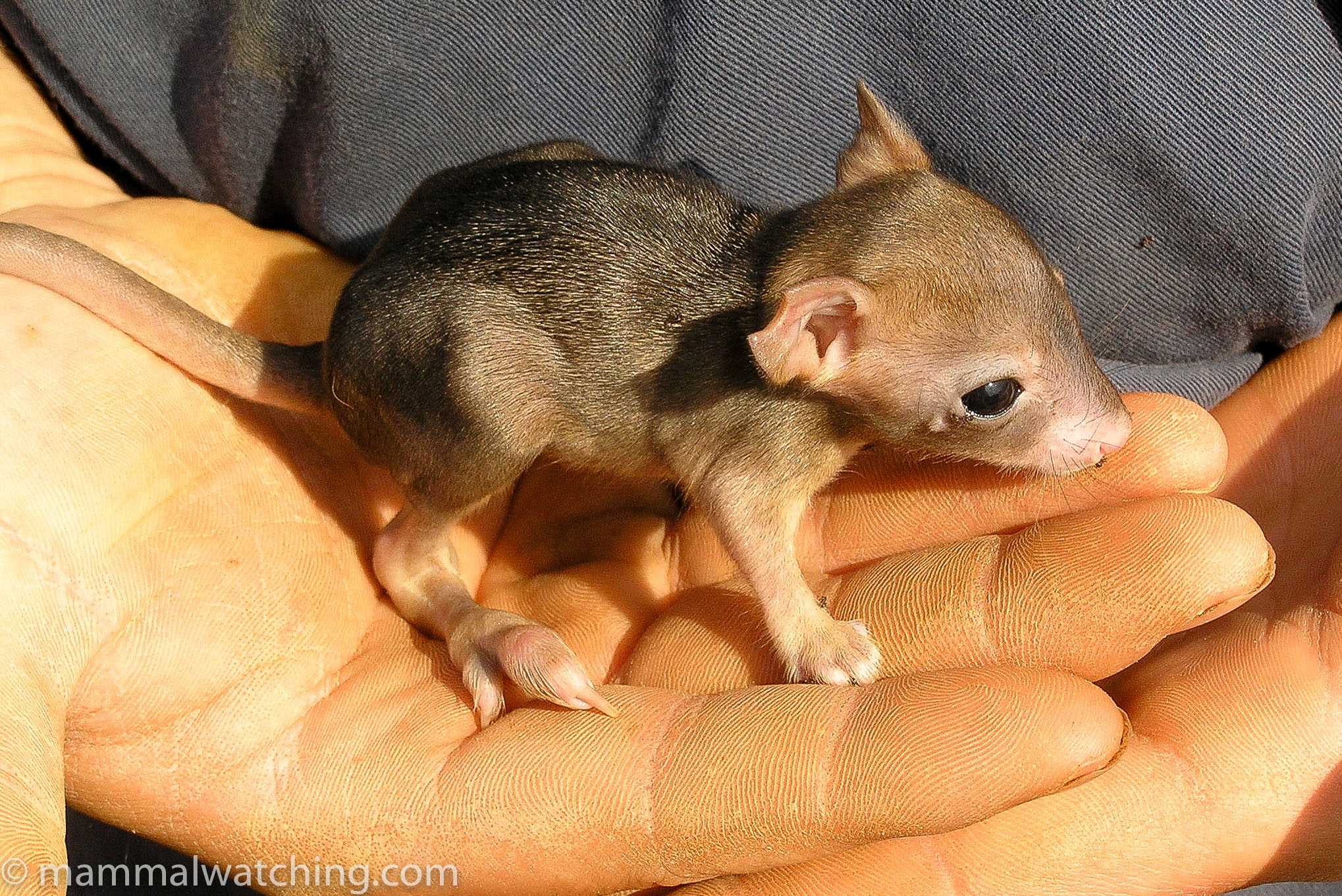
Western Australia
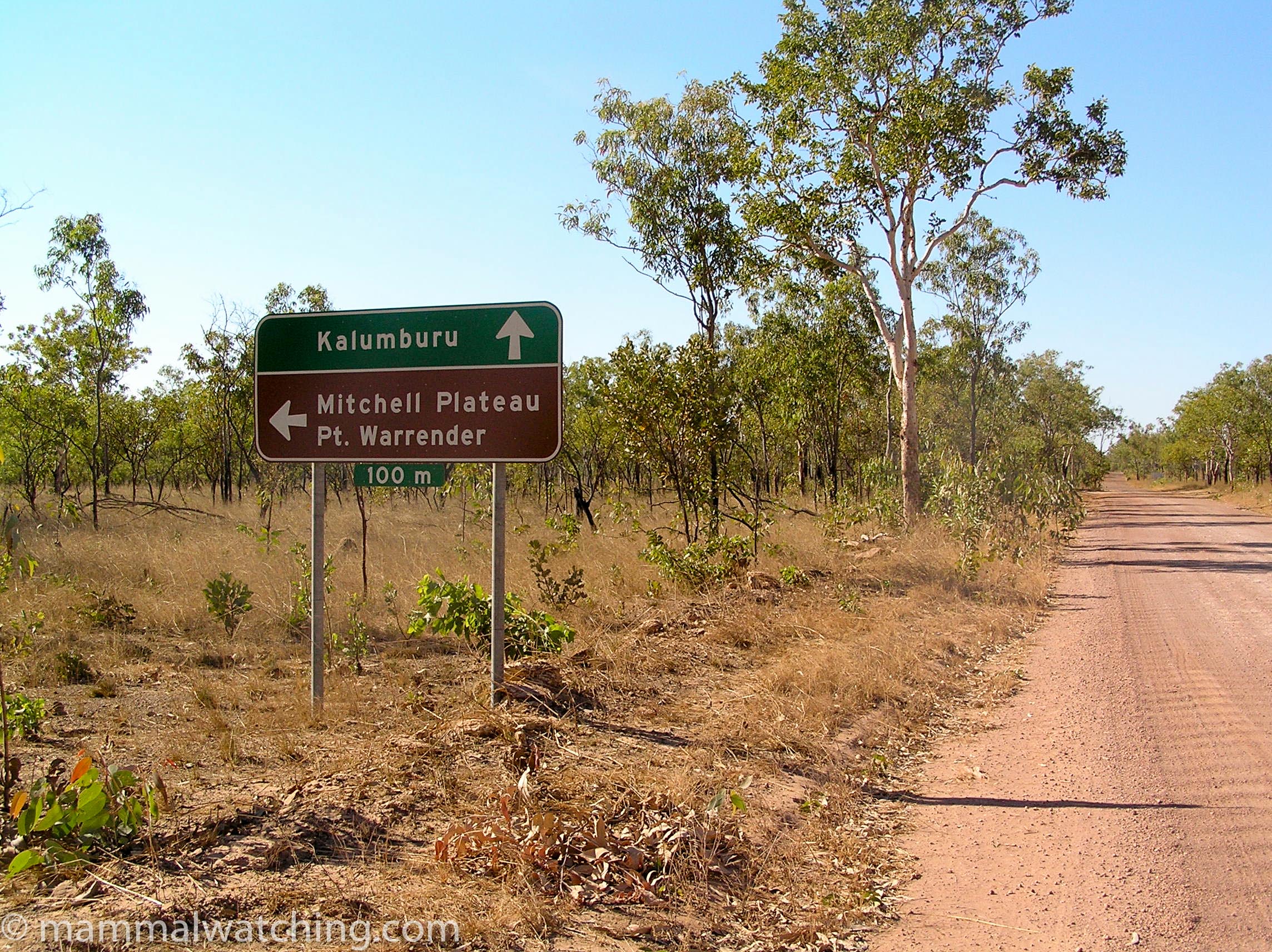
Gibb River Road, the Kimberley
Western Australia is a fabulous state for mammal watching. There are a lot of endemic species, a great variety of habitat, spectacular scenery and very few people. Some successful fox poisoning campaigns in the south-west (using 1080, a poison found naturally in the local vegetation that the native species, but not foxes, have developed immunity to) gives you a feel for what Australian wildlife was like a couple of hundred years ago.
The State’s environment department have some of the friendliest rangers and researchers in all Australia (and that’s a big call!).
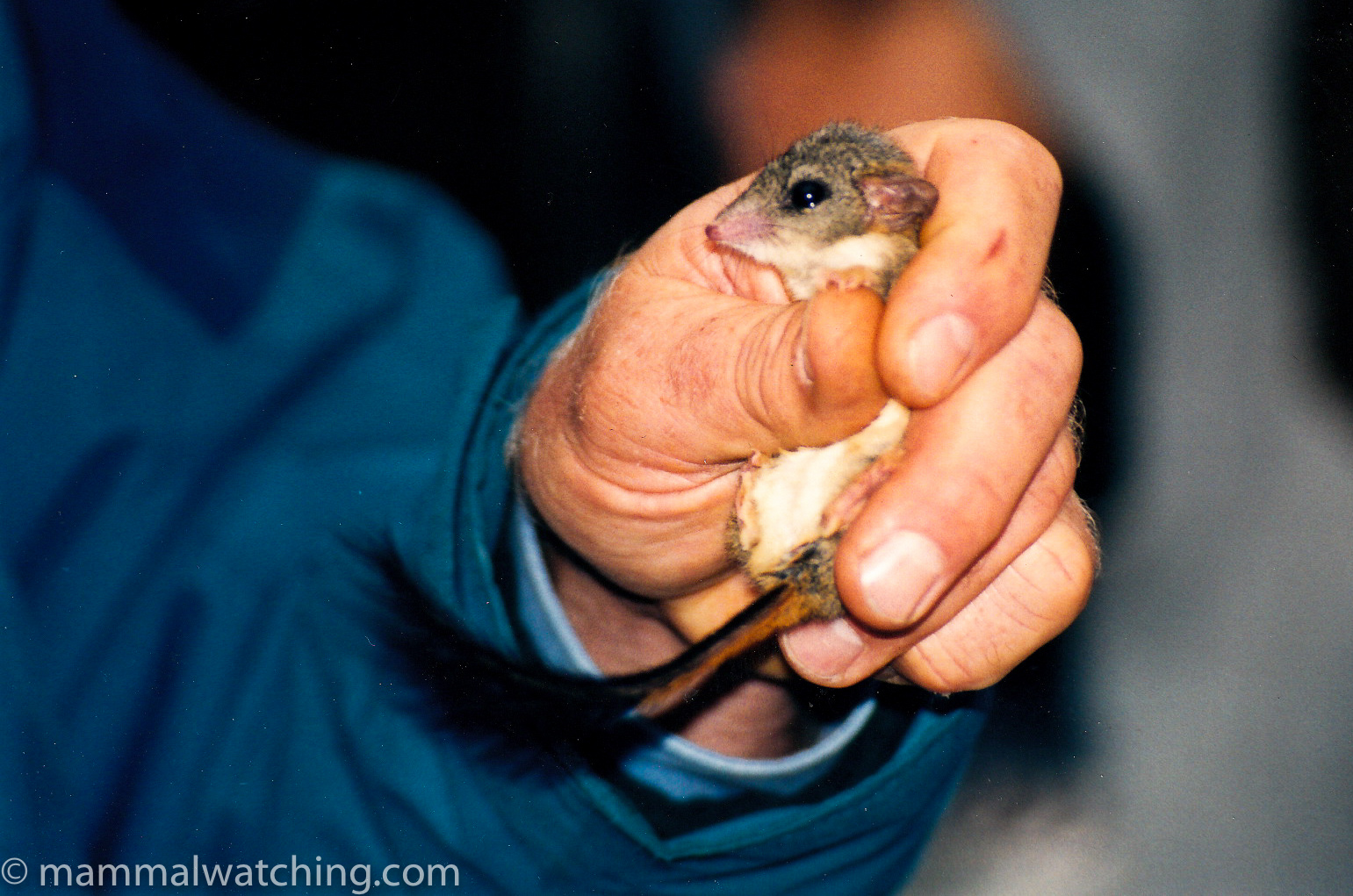
Red-tailed Phascogale, Phascogale calura
The South West
The Jarrah and Karri forests dominate the bush south of Perth and inland. On the coast are some glorious heathlands.
Dryandra Woodland, near Narrogin, is one of the best bits of Australia for seeing native wildlife. Numbats are here though they are not particularly easy to find – they are diurnal so your best bet is to drive the trails. I saw my first Echidna here, as well as my first Western Brush Wallaby, and first Woylie (Brush-tailed Bettong). Woylies tend to be more active at night and came out to graze in some of the open areas near the cottage accommodation (in fact we had Woylies fighting around our deck). There are also Western Grey Kangaroos, Tammar Wallabies and an unusual – white tipped tail – variant of the Brushtail Possum. Western Grey Kangaroos are here too of course.
Dryandra is also possibly the best place to try to see the groovy Red-tailed Phascogale, endemic to WA with a much reduced range. They are small, nocturnal and tend to stick to Sheoak thickets. I’ve never tried to see one while spotlighting and imagine they would be quite tricky to get onto, though Rohan Clark found one this way during an evening. An alternative is to sign up for one of Dryandra’ s Field Study Weekends which are – or at least were – run periodically and involved various wildlife activities including small mammal trapping. We caught one Red-tailed Phascogale and not a lot else if I remember, though Honey Possums, Western Pygmy Possums and one or two of the Dunnarts (probably Fat-tailed and White-bellied) were all possible.
But things change and in 2006, Frank O’Connor advised me that “Short-beaked Echidna and Numbat are easier to find, but Woylie is getting quite difficult. Tamara Wallaby is very easy to find, even in daylight if you know where to look on Gura Road. Brush-tailed Possums are getting more and more common. They could be becoming a problem. I went on one of the Field Study Weekends, and the Brush-tailed Possums were setting off all the traps. We caught one Mardo (Yellow-footed Antechinus), and I think that was in a pit trap. No phascogales, dunnarts, honey possums, western pygmy possums. I have seen Fat-tailed Dunnart at Dryandra. It ran across the road into a very small hollow log during daylight. I usually spotlight from a car for 2 to 3 hours. I used to see about the same number of Woylies as Brush-tailed Possums (about 15 to 20). I now see 30+ possums and I am almost lucky to see a Woylie. I used to flush Woylies quite often just walking around birding, but this is very rare now.” By late 2011 I heard the both Woylies and Numbats were now very hard to find in Dryandra.
Perup Forest Ecology Centre, near Manjimup, is another top spot – probably even better than Dryandra for the number and diversity of its mammals. It is run by the State Government and in 2002 at least they had a wonderful policy of only allowing one guest or group of guests at a time and yet only charging per person. So when I spent a night there I had the whole accommodation complex and surrounding bush to myself for something like $20. I saw my first Numbat here, one of my favourite mammals of all time (made all the more special because after just missing three in Dryandra I was borderline suicidal). At night the forest comes alive with Tammar Wallabies, Western Brush Wallabies, Woylies, Western Ringtail Possums (these are easy to find near the accommodation block), and Southern Brown Bandicoots. I also saw a Brush-tailed Phascogale from the car while spotlighting along the kilometre square road which rings the forest. They also had nest boxes up for Phascogales which would be worth staking out. The surrounding dirt roads outside the park are also thick with mammals. Western Quolls (Chudditch) are also not uncommon. Contact details for Perup and to book the accommodation are (as of 2011) best made by calling CALM in Manjimup on 08 9771 7988 or email Donnelly.district@dec.wa.gov.au. In January 2011 a visitor reported not finding any Woylies in Perup so perhaps its a similar story to Dryandra. In late 2011 the story was the same, with no Numbats either.
Lane-Poole Reserve (the Nanga Mill area in particular) near Dwellingup is one of the best spots to see Western Quolls. Once very endangered they have made a rapid recovery after the success of fox baiting programs.
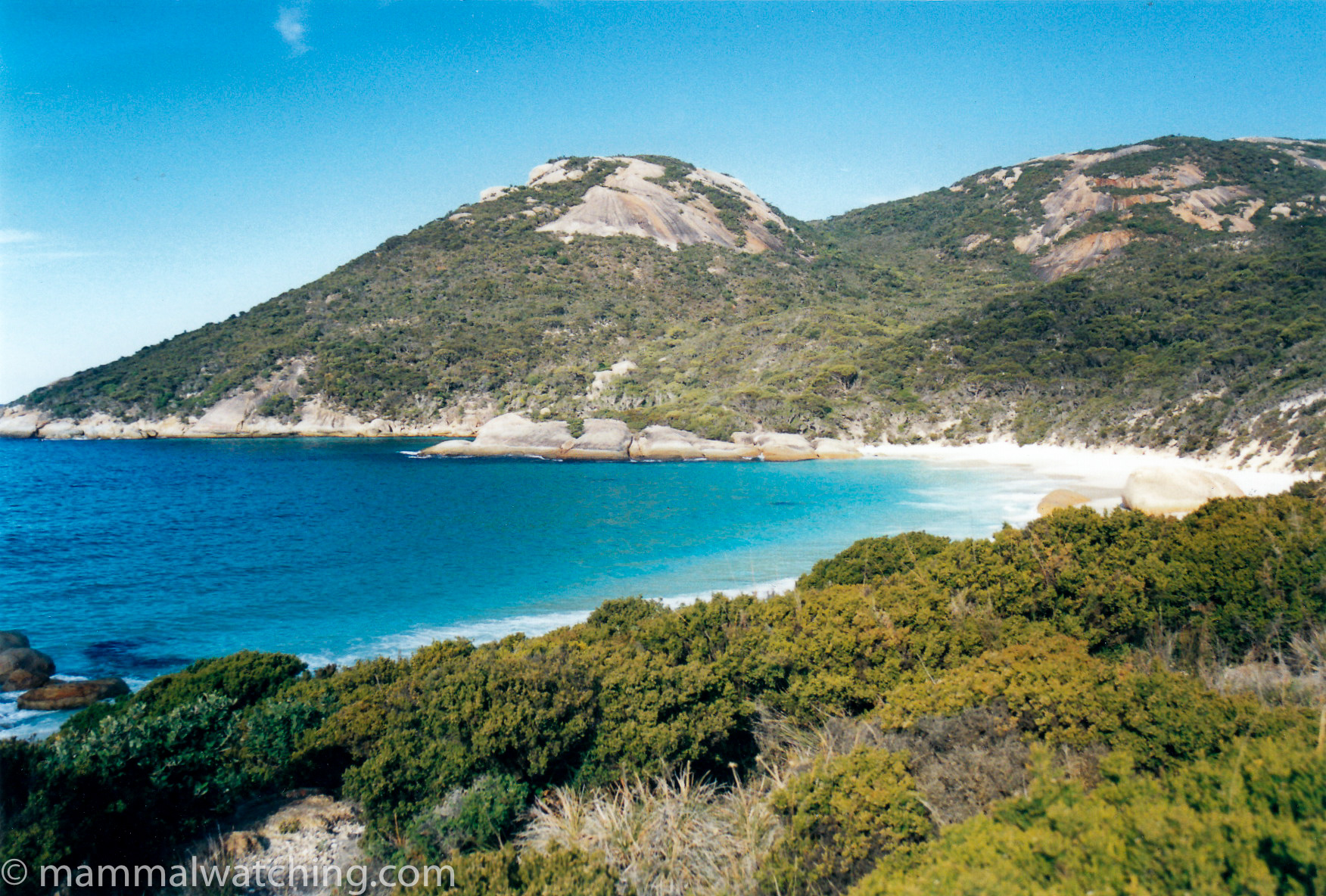
Two People’s Bay
Two People’s Bay, near Albany is famous for its rare species. Birders will know it as one of the best places to see the cryptic Noisy Scrubbirds and Western Whipbirds. Mammal people will know it as the place where Gilbert’s Potoroo, a rabbit-sized kangaroo, was rediscovered after 100 year absence. A small colony lives in the heathland around Little Beach. Only about 40 individuals are thought to live in the wild, with a few captive animals held near the visitor centre, making it one of the world’s rarest mammals. They live in very thick heath and I tried a couple of times to find the animals using a spotlight without luck. Tony Friend, legendary CALM biologist and protector of the Potoroos, eventually took pity on me and invited me out on a trapping expedition. We caught one animal and a lot of bandicoots. I also saw a Quokka here, near the visitor centre one dawn (Quokkas, which are very common on Rottnest Island off of Perth aren’t easy to see on the mainland). Birdwatchers staking out scrubbirds have reported seeing Honey Possums. Great scenery too.
Pete Nunn visited in late 2011 and tells me Quokkas and Western Ring-tailed Possums were common at night around the picnic area.
Whenever I visited Two People’s Bay I stayed at Cheyne’s Beach, a half hour drive to the east. This seems to be another magnet for rare wildlife. Dibblers (a large antechinus) were rediscovered at Cheyne’s Beach, though I have never seen them there. If you are staying at the caravan site ask about whether the nest boxes are still up for Western Pygmy Possums – they were occupied in November 2003. Vagrant marine life seems attracted to the bay – a Subantarctic Fur Seal was reported there in 2003, and a Strap-toothed Beaked Whale had been hanging around in 2002 (I didn’t see either species). There are Bush Rats in the heathland along with Honey Possums and Southern Brown Bandicoots. Some good birds there too – I think may have won the world speed record for Noisy Scrubbird spotting the first time I visited. I got up at dawn, picked my way past the Red-eared Firetails on the grass outside my cabin, heard a scrubbird walked to the nearest bush and looked straight at the thing as it was singing its lungs out.
The Stirling Ranges is another nice park in the south west and Frank O’Connor says that the Bluff Knoll Cafe on the north side of the Stirling Range Retreat is a great place to see Honey Possums, particularly in September (late in the afternoon is a good time).The cafe has flowering grevilleas, hakeas, eucalypts which the animals feed on.
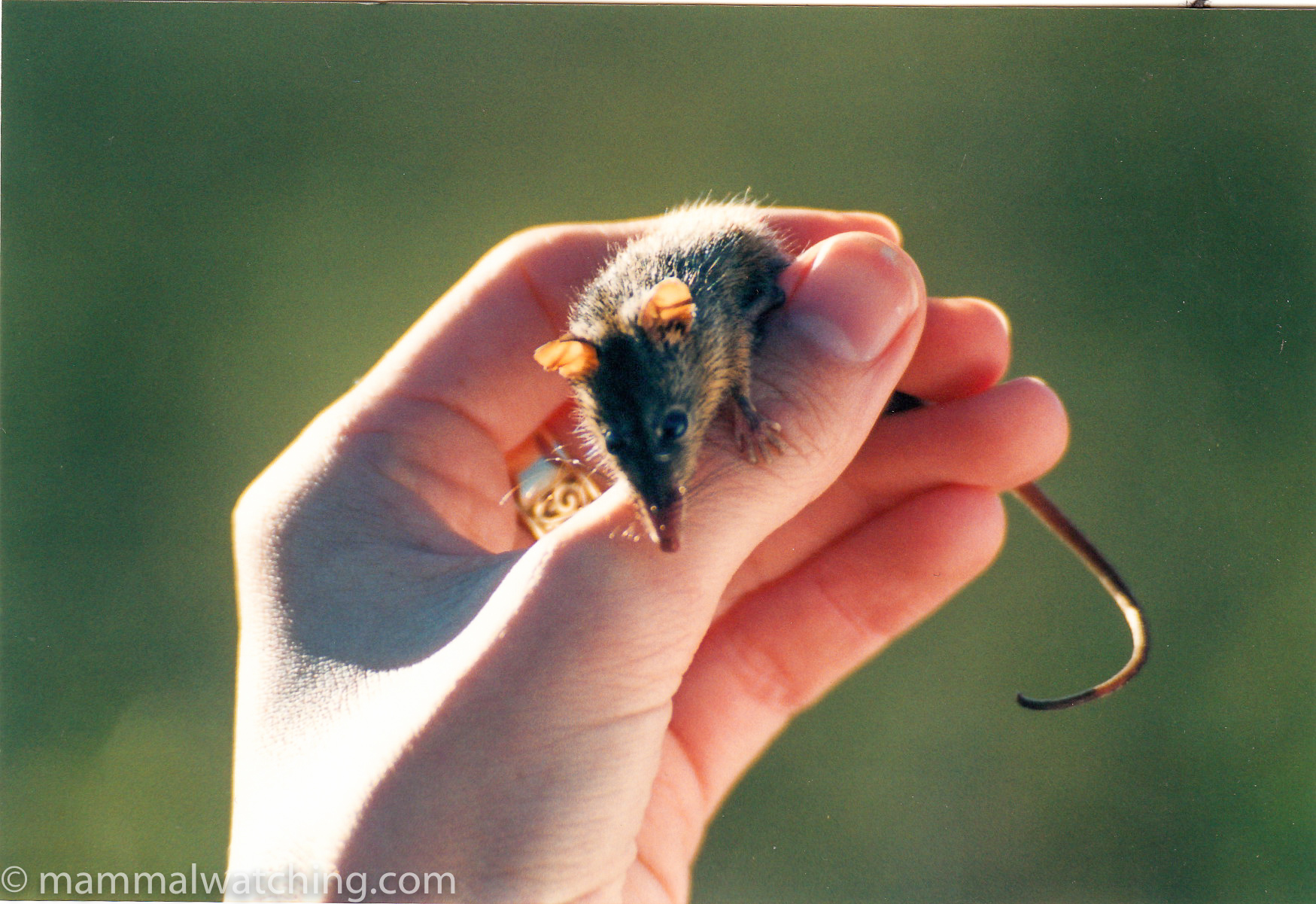
Honey Possum, Tarsipes rostratus
The Fitzgerald River National Park is a large tract of heathland along the southern coast. I spent a few days here helping a friend catch Honey Possums for her phD. We caught loads – in pitfalls – though they were a bit patchy in their distribution. Also caught a few White-bellied Dunnarts and several Bush Rats.
Lake Magenta, near Newdegate, is one of the largest nature reserves in the wheatbelt. The good people of CALM arranged for me to take part in a trapping program there for a few days in 2004. We caught a lot of nice stuff including Heath Mice, Ash-Grey Mice, beautiful Western Mice, a Mitchell’s Hopping Mouse, a Gilbert’s Dunnart, Honey Possums and Western Pygmy Possums. In 2005 CALM also caught Red-tailed Phascogales and Chudditch there. CALM’s Katanning office are worth talking to if you are in the area and want to volunteer.
I have never crossed the Nullabor but there are some interesting mammals including Southern Right Whales (in the winter) and Southern Hairy-Nosed Wombats. The Eyre Bird Observatory runs various wildlife courses, including a bat course which involves trapping. They also have nest-boxes up for Western Pygmy Possums.
Perth to Exmouth
The 2200 km between Perth and Broome get progressively drier as you head north. I have only driven the Broome-Coral Bay leg once and didn’t spend a great deal of time looking for stuff on the way.
Jurien Bay, a few hours north of Perth, is home to some islands that support Dibbler populations. I spent a week trapping and radio tracking them here in December 2002. We also caught hundreds of feral house mice but none of the Boulanger Island Dunnarts (a subspecies of Sminthopsis griseoventer). Inshore Bottlenose Dolphins were just off the beach one day.
Further north Shark Bay is the easiest place to see Dugongs, which are common – boat trips run around the bay every day. Inshore Bottlenose Dolphins (Tursiops aduncus) are well known at Monkey Mia and come into the beach several times each day to interact with (i.e. get fed fish by) the tourists.
In April 1999 I visited Exmouth, or at least I tried to: it was flattened by a cyclone a few days before I got there so I had to stop at Coral Bay and swim with Whale Sharks there. En route though I began seeing Red Kangaroos up near Denham. Boat trips along Yardie Gorge near Exmouth usually see Black-footed Rock Wallabies I believe. Red Kangaroos and Euros are common in Cape Range National Park.
Barrow Island
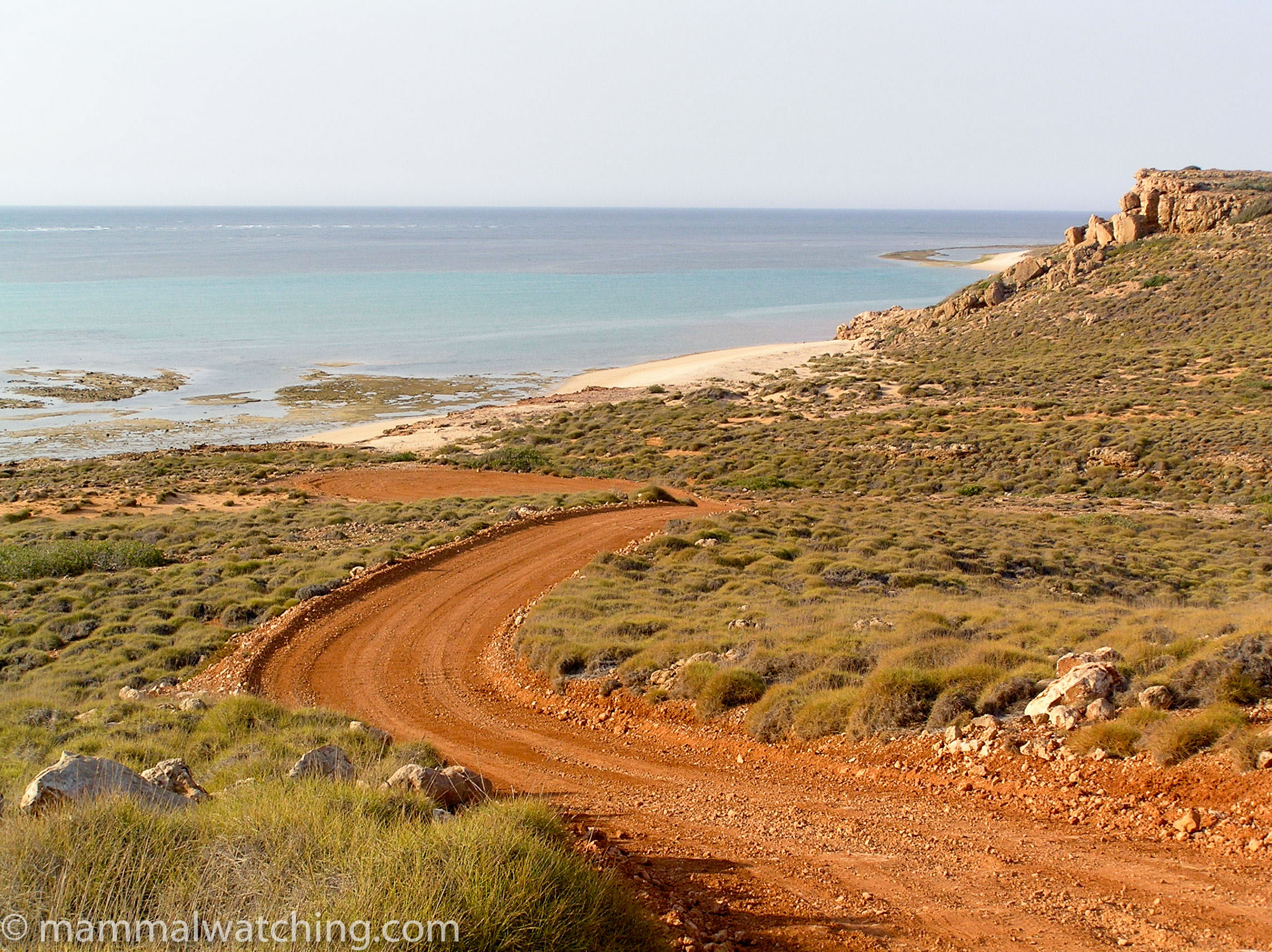
Barrow Island
In 2004 I spent a week Boodie (Burrowing Bettong) trapping on Barrow Island. An interesting place and I volunteered to help Felicity Donaldson with her doctorate on Boodie genetics. We stayed at the main base on camp – complete with a swimming pool and unlimited amounts of good food – so life wasn’t too tough. Though carrying cage traps through the spinifex, with temperatures in the high 30s wasn’t completely cushy, AND the beer was rationed to 4 cans of mid strength a night.
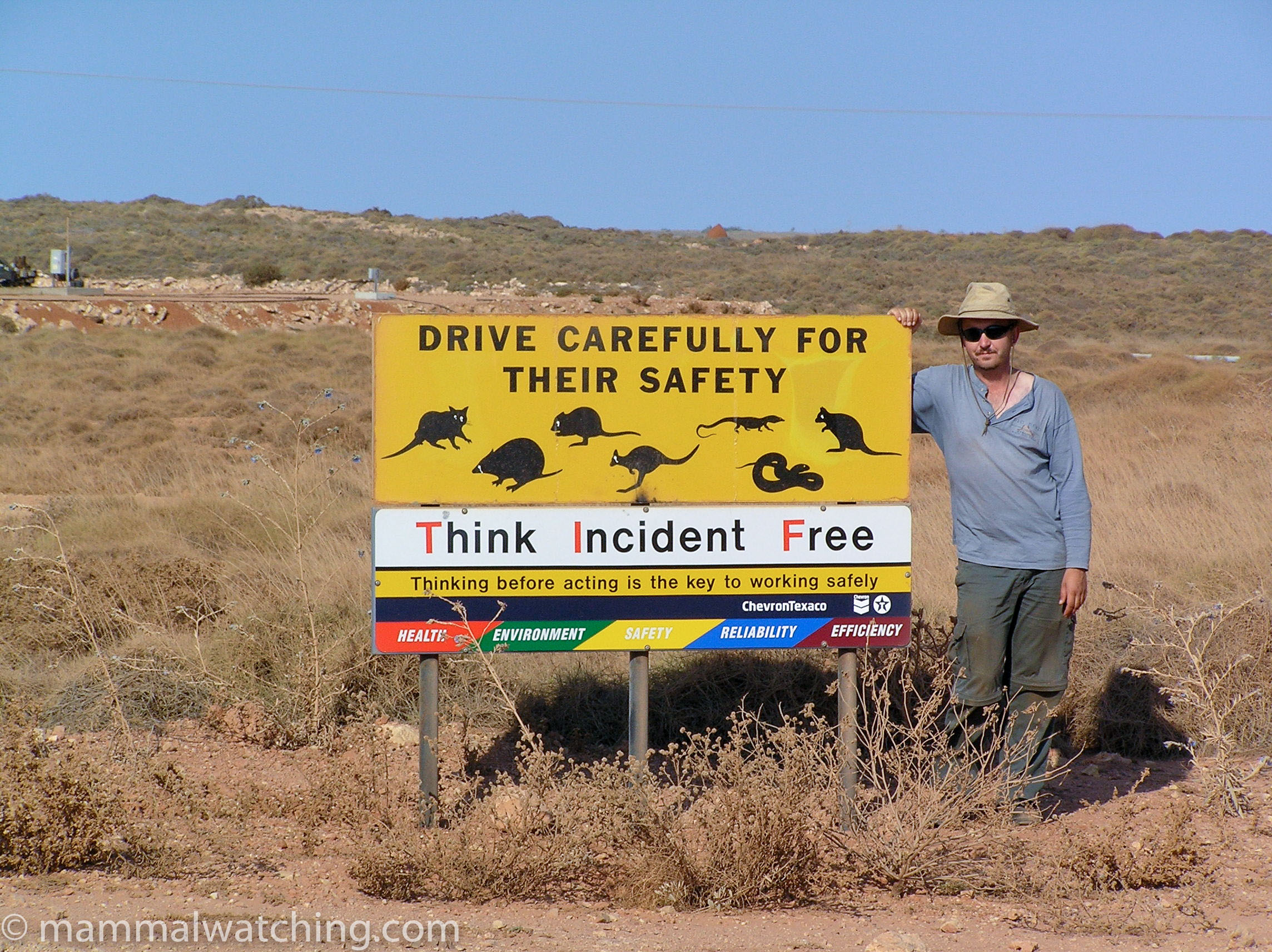
Fauna surveying on Barrow
Barrow is completely free of feral animals, even mice, and the only weeds are near the airport. Its a A class nature reserve and also a working oil field. Pretty much the only way to visit there is to get a job on the island, or (like me) volunteer to help a student. The oil infrastructure on the island has been there so long that I thought it blended in quite nicely with the spinifex (I’d almost say they livened things up a bit). Some great place names too … the ‘Valley of the Giants’ is home to a few 4m Eucalypts (the only trees of any note), while ‘The lighthouse’ was basically a spotlight on a stick.
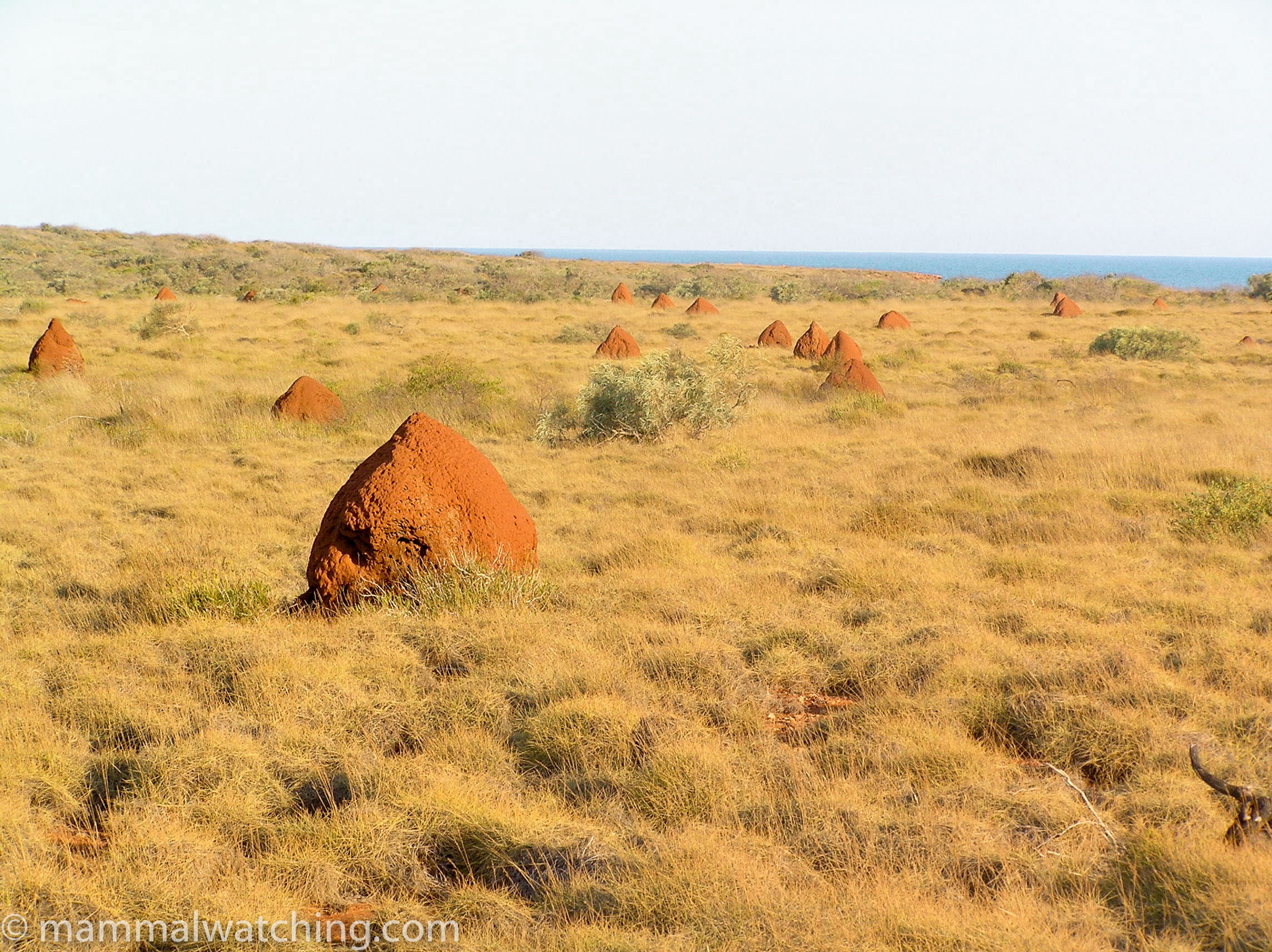
The Barrow bush
The larger mammals on Barrow are supremely easy to see and catch. I’d estimate the average capture rate for our cage traps was about 75%. Golden Bandicoots are everywhere – and wander through the bar in search of scraps of food. We caught plenty of Boodies and saw a few while spotlighting (Felicity’s trapping was focused at Boodie warrens), and we also caught a few Spectacled Hare Wallabies (these are particularly easy to see on the sports oval by camp).
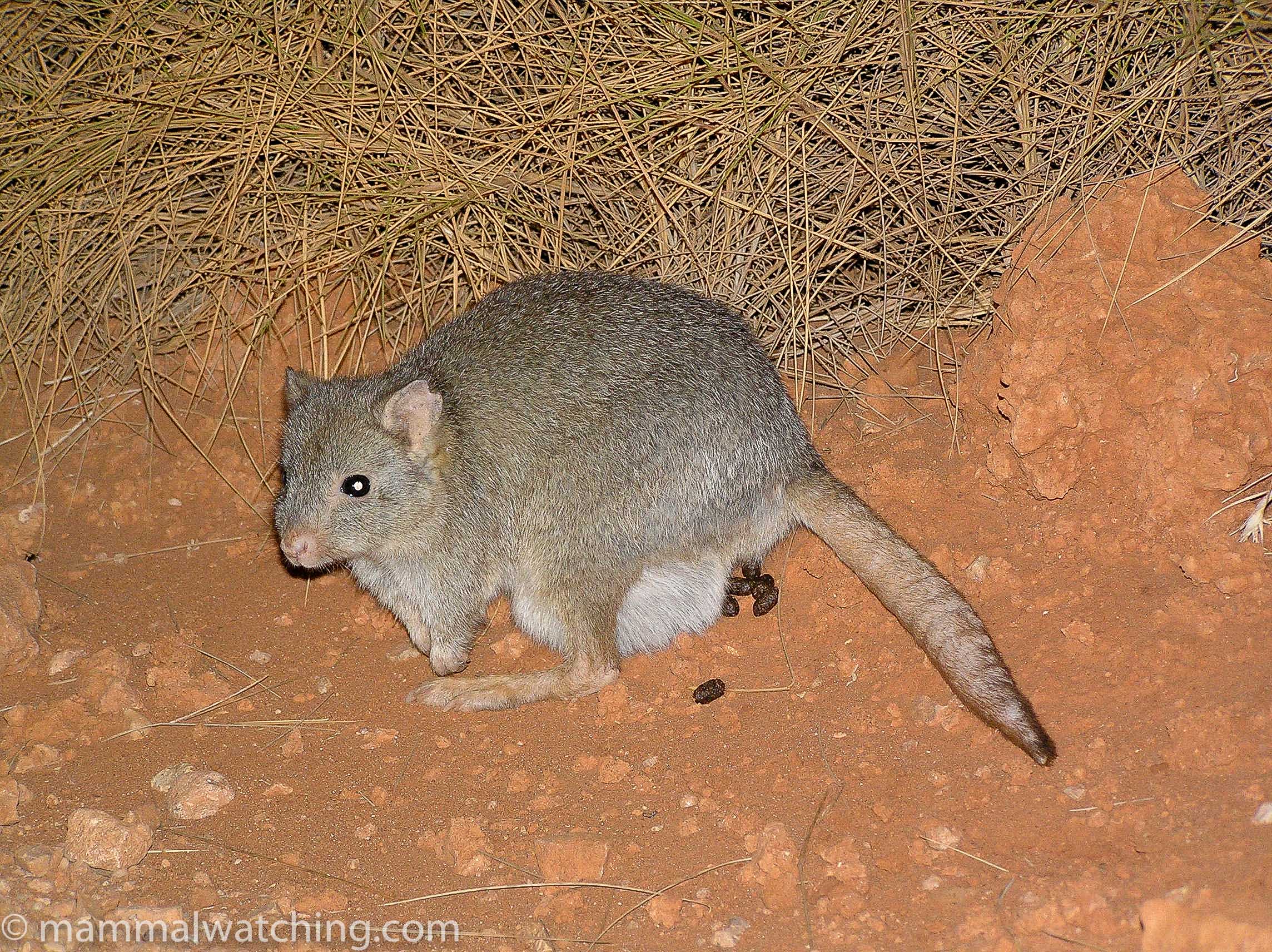
Boodie Burrowing Bettong, Bettongia lesueur

Burrowing Bettong (Boodie) pouch young
The Barrow Island Brushtail Possums were commonly trapped too – and they are much softer (in looks and personality) than those in the South and East. THe Barrow Island subspecies of Euro (Wallaroo) is smaller than those I’ve seen on the mainland. Most of the animals – presumably unused to fearing people – were very easy to approach and handle. Its something of an Australian Galapagos Island.
I didn’t do a lot of spotlighting but when we did go out we saw a Common Rock Rat, along with the usual Bandicoots, Bettongs, Hare Wallabies and Possums. Black-footed Rock Wallabies are easy to see behind pumping station Q21. And we found some Common Sheathtail Bats in a small cave, but couldn’t see the other species of bat that is supposed to be here (presumably Vespadelus Finlaysoni from the description I was given). We didn’t see the Water Rats, Planigale or Pseudantechinus species (possibly P. Roryi though its being debated) but then we weren’t small mammal trapping…
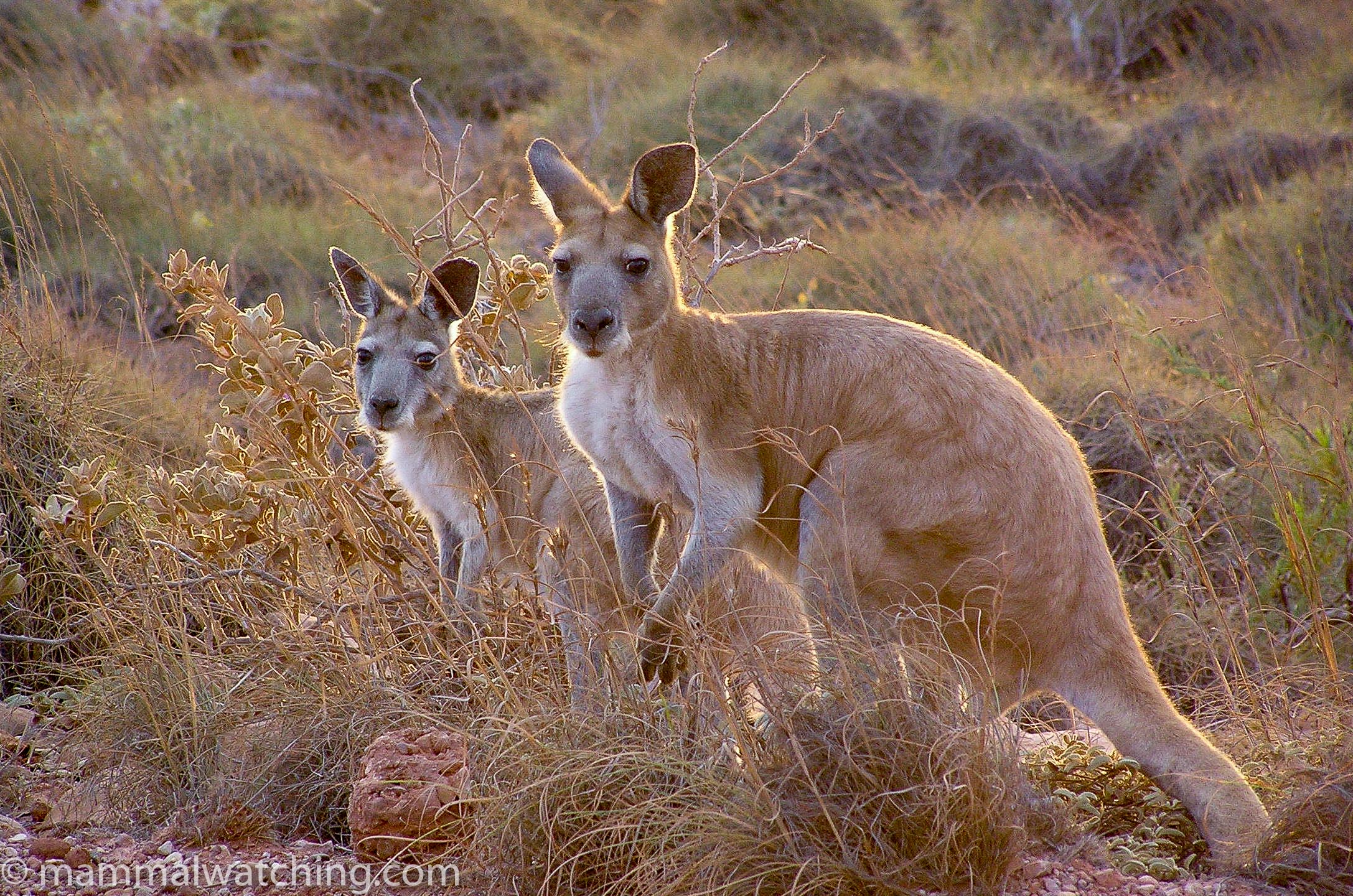
Barrow Island Euro, Macropus robustus
Off the South East coast of the island (from base) I saw what I think might have been a couple of Fin or Bryde’s Whales one morning off shore. But maybe they were Humpbacks behaving peculiarly… they were a long way off. It sounded like Spinner Dolphins were pretty regular off the island too, though I didn’t see any. The diversity of land birds is pretty low – lots of White-breasted Woodswallows, Welcome Swallows, Singing Honeyeaters, Kestrels and Ospreys. I saw a few of the Black and White fairy wrens, along with several Spinifex birds and a couple of Spotted Harriers. There was more variety among the sea birds, though my IDing of most of them would be pretty dodgy. Other wildlife of interest included stacks of Green Turtles nesting and mating on the beaches, a fair few Perenties and a Brown Snake.
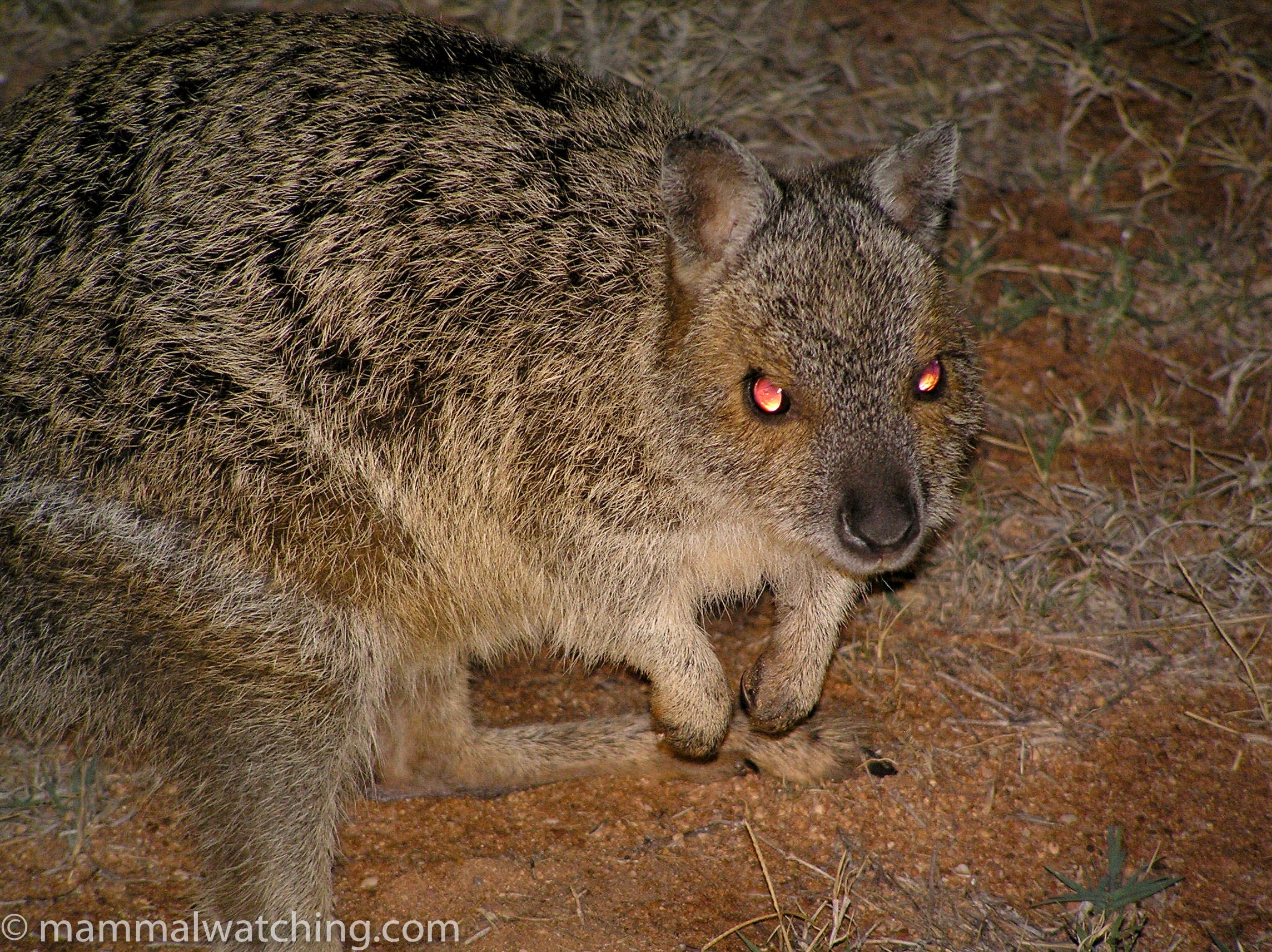
Spectacled Hare-wallaby, Lagorchestes conspicillatus
The Pilbara
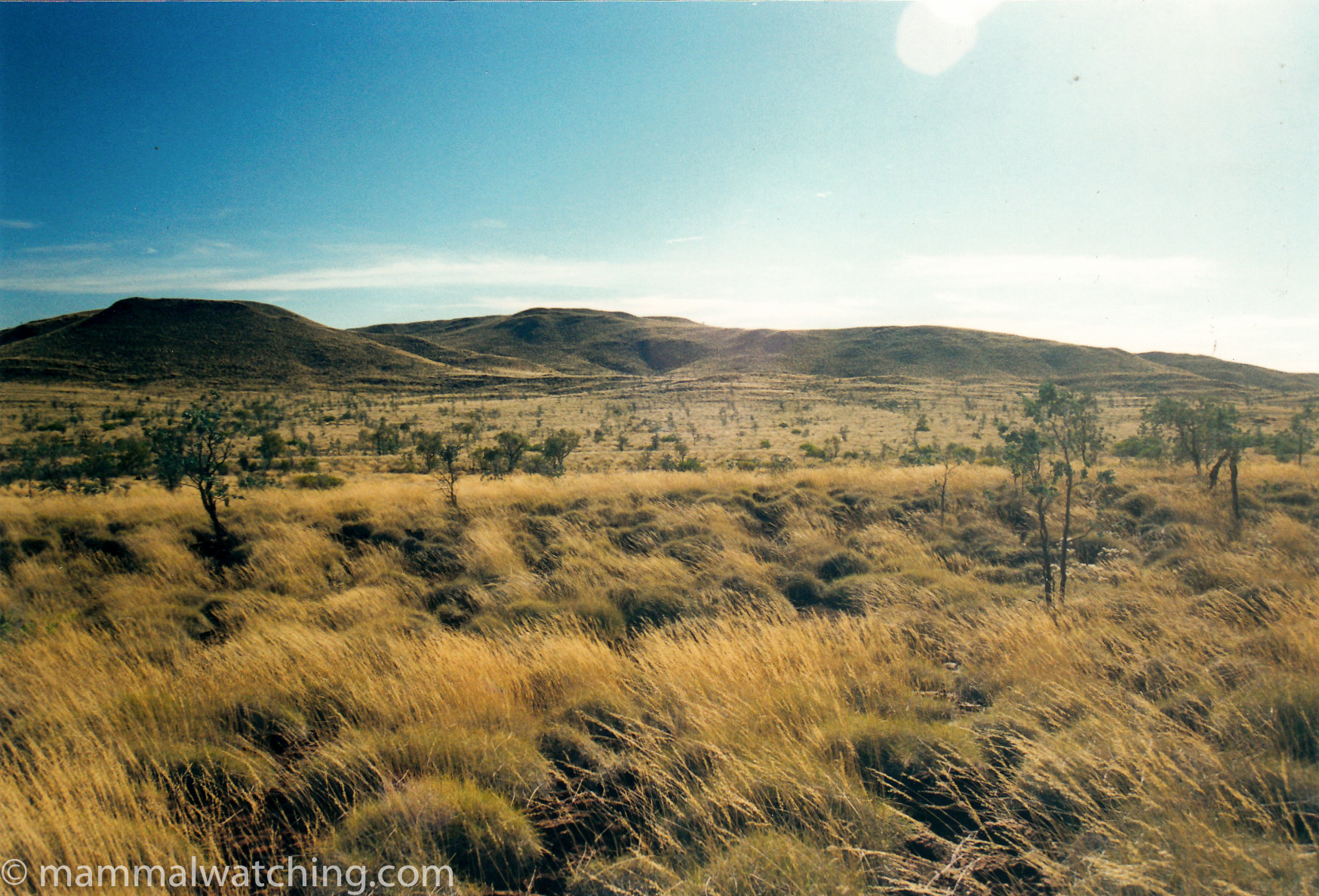
Mentheena Station, Pilbara
I suppose the Pilbara begins at Karratha, where it is quite easy to see Vespadelus finalysoni (Inland Cave Bats) nearby at the Tommy Lee mine (about 35km along the Hammersley Iron road). Saw a couple flying around the rocks at Hearson’s cove too. Rothschild’s Rock Wallabies can be found on the Burrup Peninsula – just ask the locals.
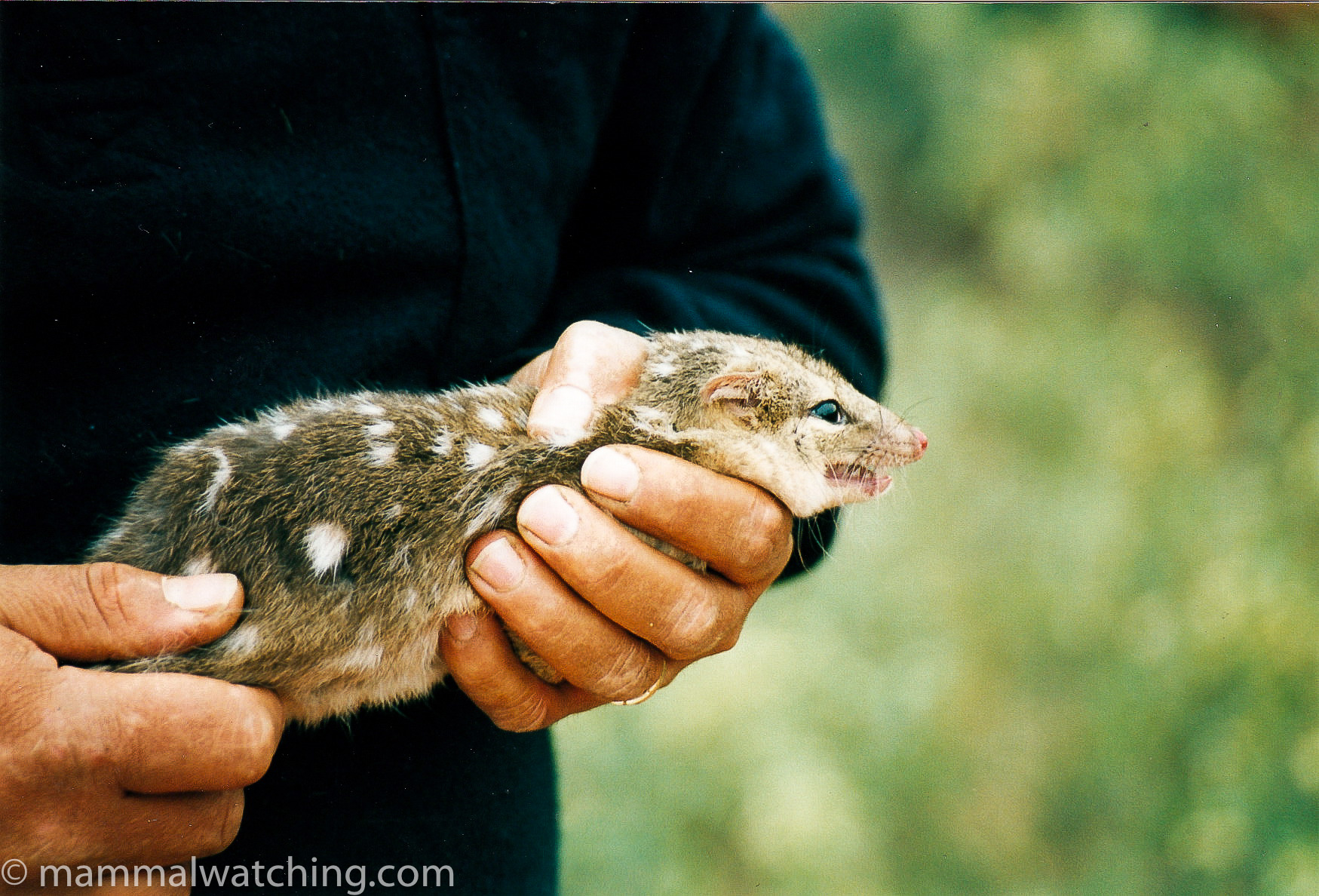
Northern Quoll, Dasyurus hallucatus
In 2001, after a bit of luck ($2000 worth) on the Melbourne Cup sweepstake I took one CALM’s (the name back then for the State’s environment department) “Landscape Expeditions” to the Pilbara (these are similar to Earthwatch expeditions in concept). We were running a fauna survey at Mentheena Station, a big cattle station, that CALM had recently bought, on the Nullagine River quite near Marble Bar. It has to be one of the best spots for finding the Pilbara’s endemic mammals.
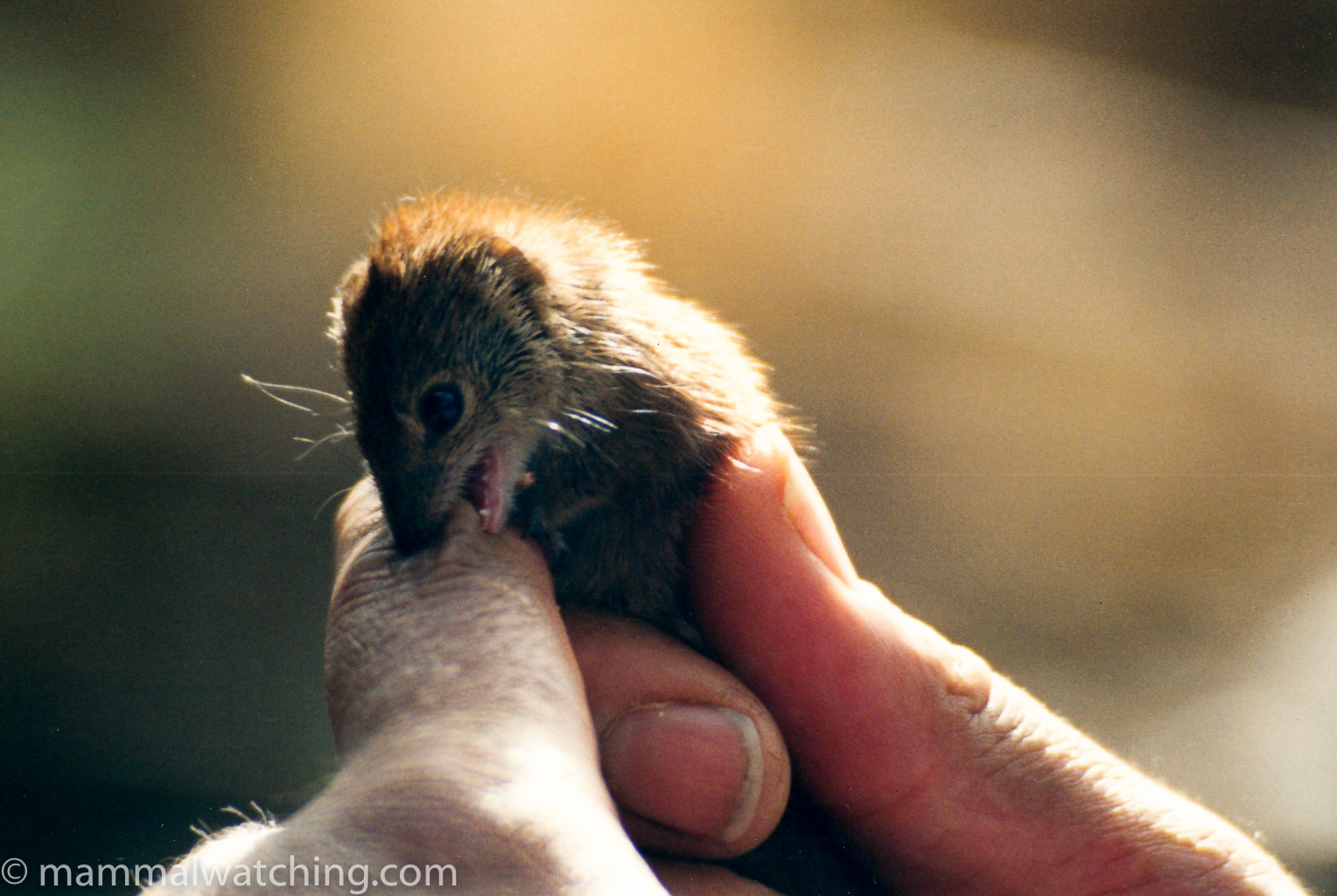
Little Red Kaluta, Dasykaluta rosamondae
In a week’s worth of intensive mammal trapping over at least 10 sites (using elliiots, pitfalls, a few cages), we caught Pilbara Ningaui, a Planigale species that is probably undescribed and endemic to the Pilbara but is awaiting investigation at the museum, the brilliant Little Red Kaluta, Wooley’s and Tan Pseudantechinuses, Stripe-faced Dunnarts, Western Pebblemound Mice, Sandy Inland Mice, Delicate Mice, Spinifex Hopping Mice, a Common Rock Rat and one Northern Quoll.
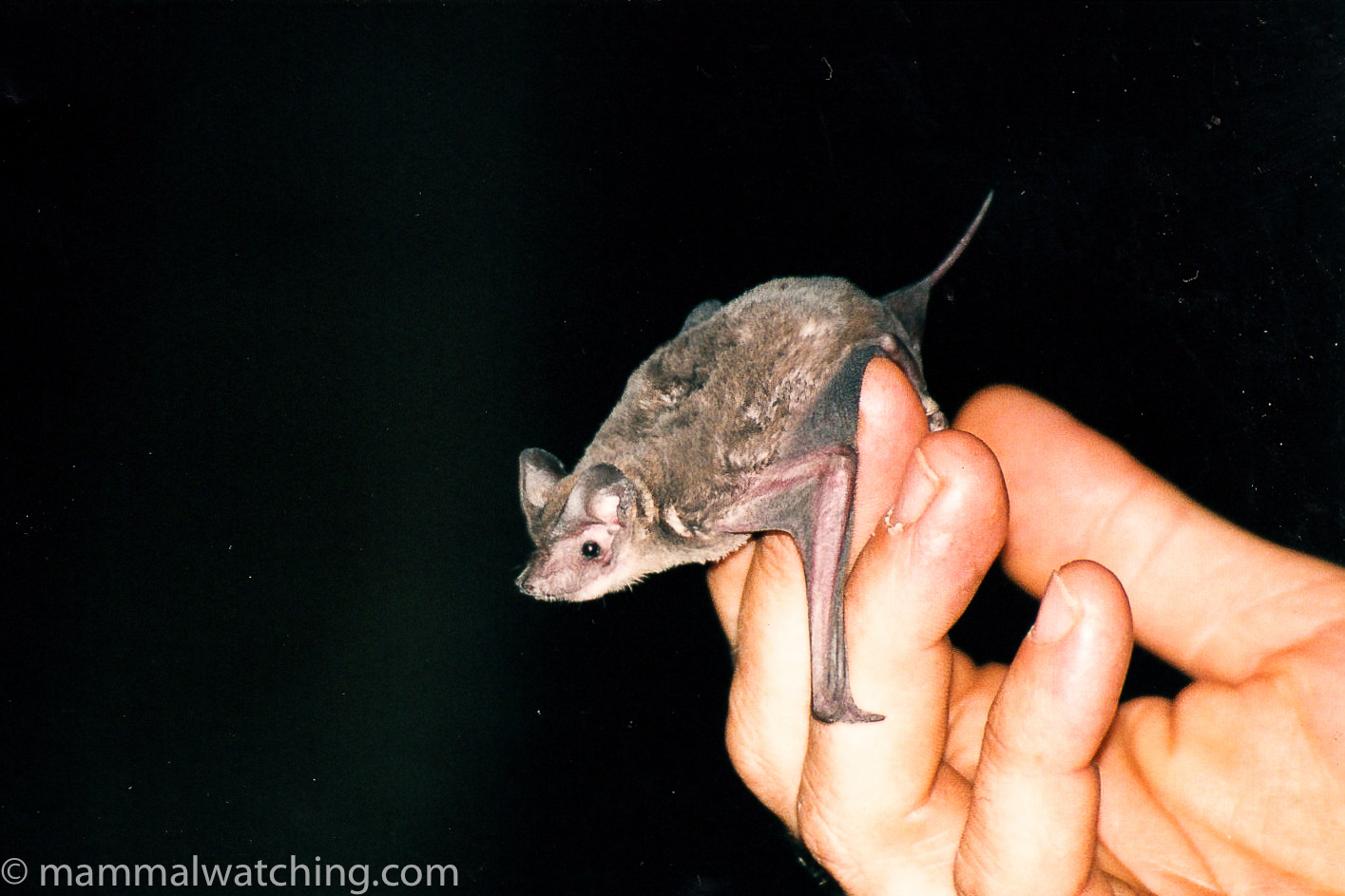
Beccari’s Mastiff Bat, Mormopterus beccarii
We found Hill’s Sheathtail Bats living in the caves and Rothschild’s Rock Wallabies living along the gorges. Wallaroos were quite common. During a couple of hour’s mistnetting we caught a Beccari’s Mastiff Bat and some Little Broadnosed Bats. There were feral Donkeys and Cattle living on the station as well as Camels (which we didn’t see). Not a bad haul.
The Kimberley
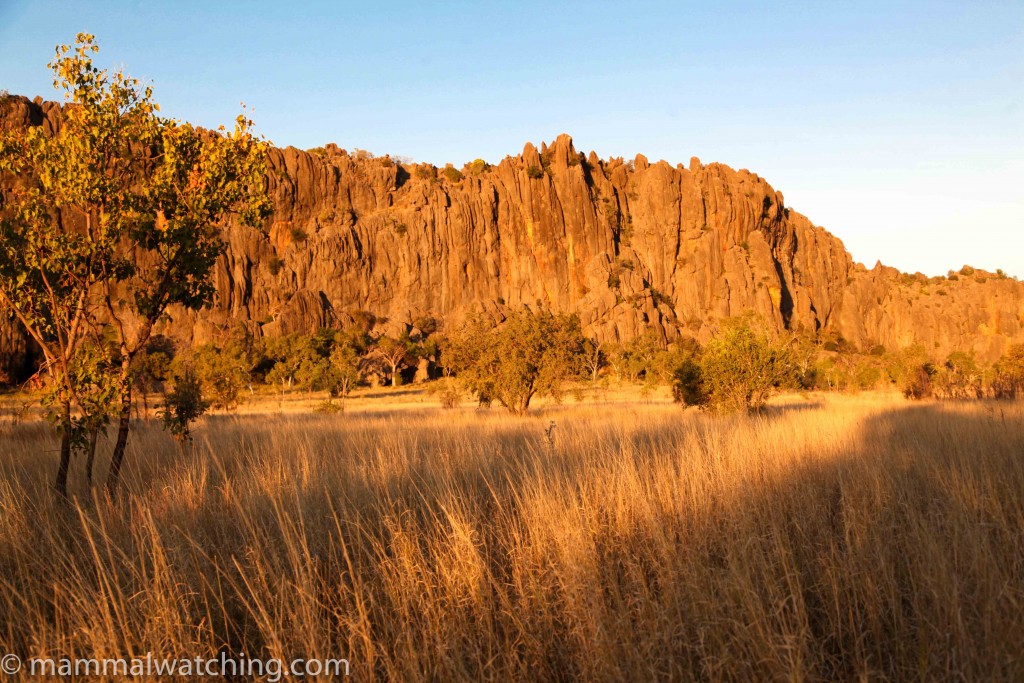
Windjana Gorge, The Kimberley
Broome is the gateway to the Kimberley. It is also perhaps the most accessible place in Australia to see wild Bilbies. In 2001 I saw a couple that were 72km along the dirt road to Dampier Downs, near Broome (this road is off the Great Northern Hwy about 25km south of the Roebuck Plains Roadhouse). After 65km or so you’ll come to a fork in the road and you should bear right. The Bilbies were 6 – 10 km after this. The road was easy to drive in my little suzuki four wheel drive. Ground clearance might be a problem for a 2wd. I saw a Red Fox (which was a bit of a way north of where I thought they got to) a few kilometres before I saw the Bilbies which doesn’t bode well for their survival chances. (In 2009 I was told this road might not be open , or used much, anymore – so proceed with caution and check first at the Roebuck Plains Roadhouse).
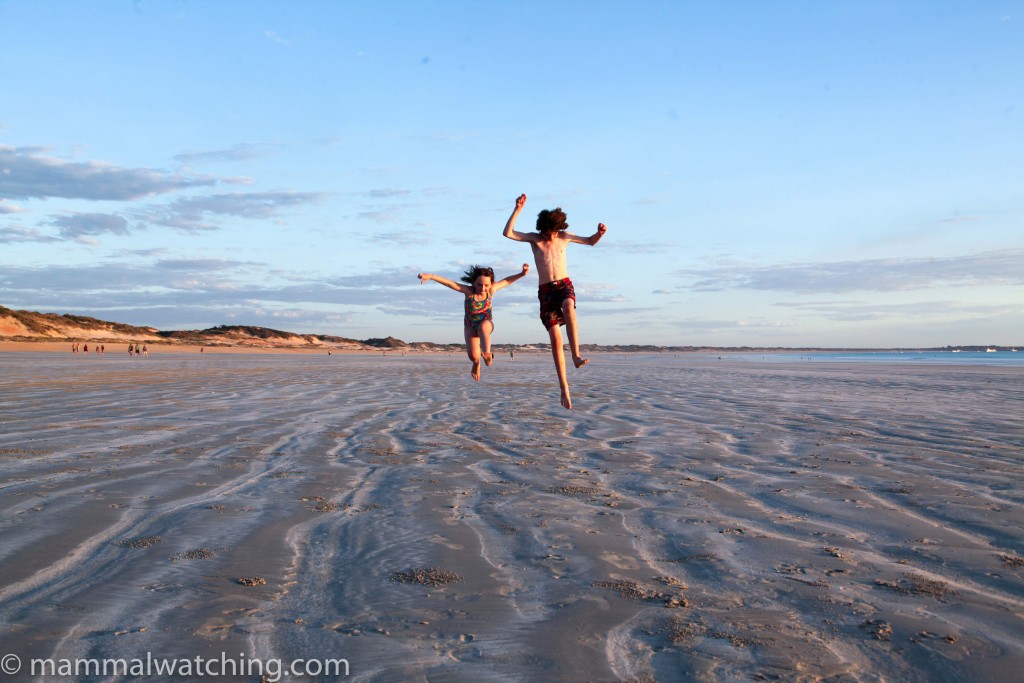
Patrick and Katy enjoy Cable Beach, Broome
The Broome Bird Observatory is the most reliable place I know to see Australian Snubfin Dolphins (a recent split from the Irrawaddy Dolphin) . They are seen just about every day around high tide. Ask at the observatory for directions to the one tree lookout over the estuary. Agile Wallabies are quite common in the scrub around Broome and Northern Nailtail Wallabies are here too, though less easy to see.
In May 2015 I read this report of Bilbies being discovered just out of town. Presumably the site isn’t hard to find if you ask around (possibly its here).
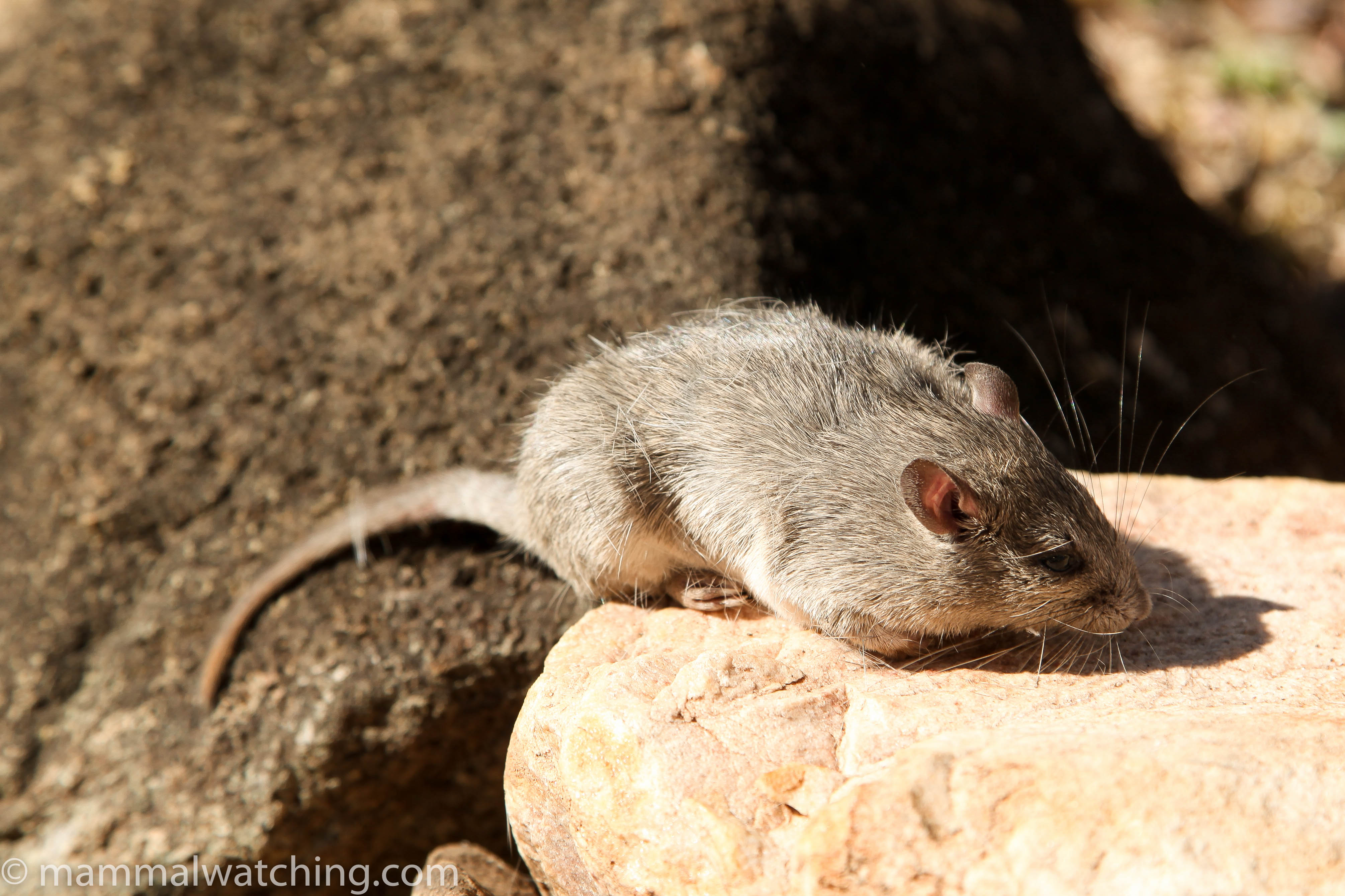
Kimberley Rock Rat, Zyzomys woodwardi
The Gibb River Road runs from Derby up into the Kimberley proper. Mount Hart station, a few hours north of Derby, is a lovely place to stop. They’ve occasionally seen Golden-backed Tree Rats in their garden. I didn’t see any, despite spending 8 hours spotlighting for them. In 2004 there were Northern Cave Bats roosting in a shed during the night though, and Black-flying Foxes and Sugar Gliders were common around the orchard with Northern Nailtails and Agile Wallabies around the airstrip and what was probably a Western Chestnut Mouse along the creek.
By 2014 Mt Hart Station had changed hands but remains a great place to stay (camping is a lot more affordable these days than a room across all the Kimberley and beyond I suspect). One the small rocky hill, just to the left of the end of the track when you drive to Mt Mattew Gorge. There were Northern Quolls, Common Rock Rats and my first Kimberley Rock Rat here.
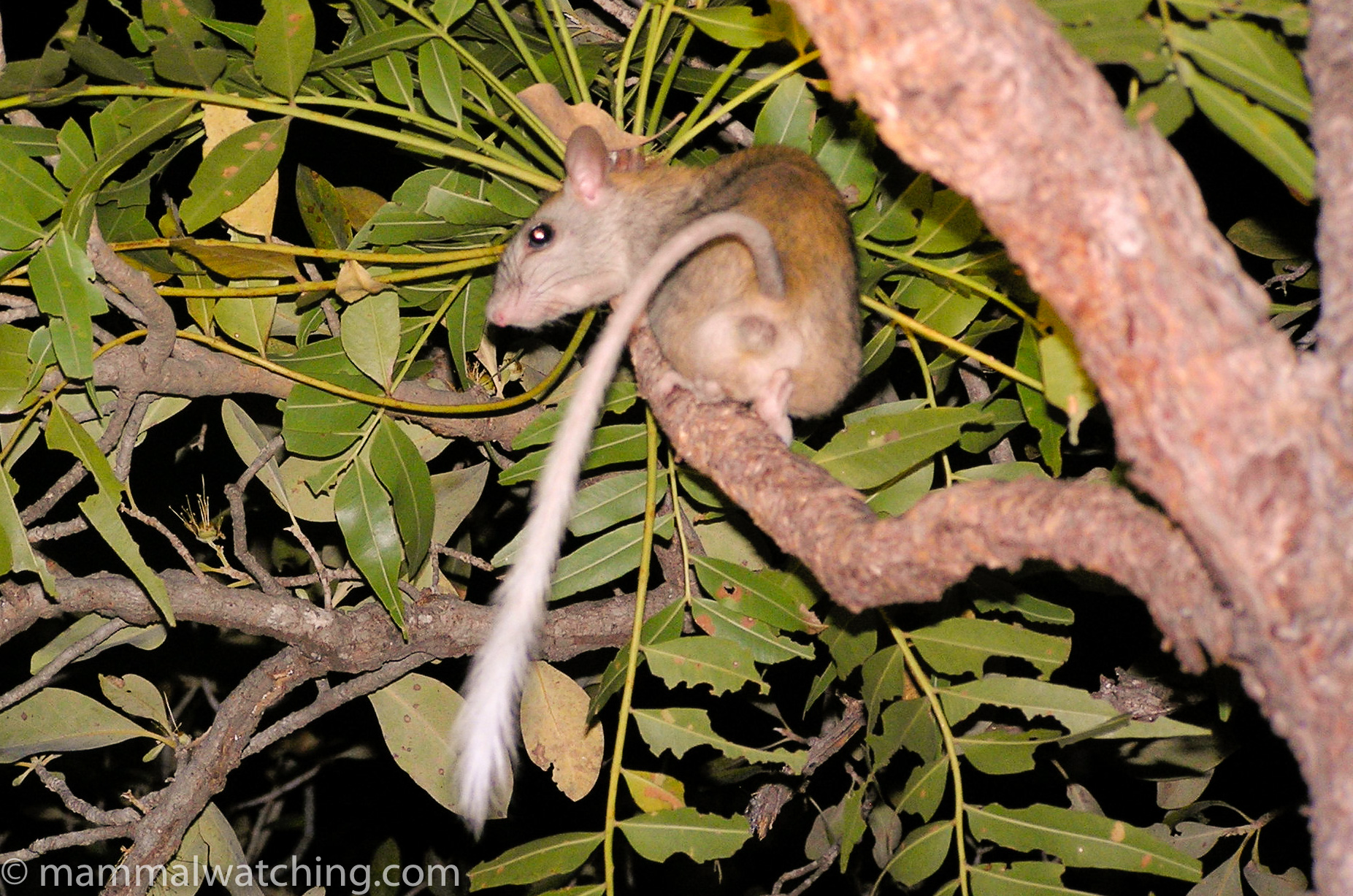
Golden-backed Tree Rat, Mesembriomys macrurus
The first time I went to the Kimberley I didn’t have time to get to the Mitchell Plateau so so I went to Bachsten’s Creek for a night. I didn’t really have enough time to get there either to be honest – its about a 12-14 hour drive from Broome – the last 140km of which (along the Munja Track from Mt Elizabeth station off the Gibb RIver Road) took 7 hours. But the wildlife was worth it.
I spent 6 hours spotlighting around the camp and saw a heap of stuff. Euros, Short-eared Rock Wallabies, Sugar Gliders, Rock Rats (Common rather than Kimberley I think) and Monjons were common around the campsite (with the Rats and Monjons on the ridge immediately behind camp and on the other side of the river too). I also saw what may have been a Ningbing Pseudantechinus, a Northern Quoll and a pair of Rock Ringtails (I didn’t get a brilliant view of the tails of the possums… but much as I wanted them to be Scaly-tails I’m sure they weren’t, though STPs are in this area). The weather was warm and humid, the moon about three-quarters and the mammals seemed slightly more active after 11pm (at which point it had started clouding over), though there was decent activity all through the evening.
Bachsten’s Creek is a pretty spot, and there’s a safari camp there with showers etc set up (though the camp is closed for the wet season, the showers remain). Black Grasswrens are apparently quite easy to see there, though I didn’t have time to look properly.
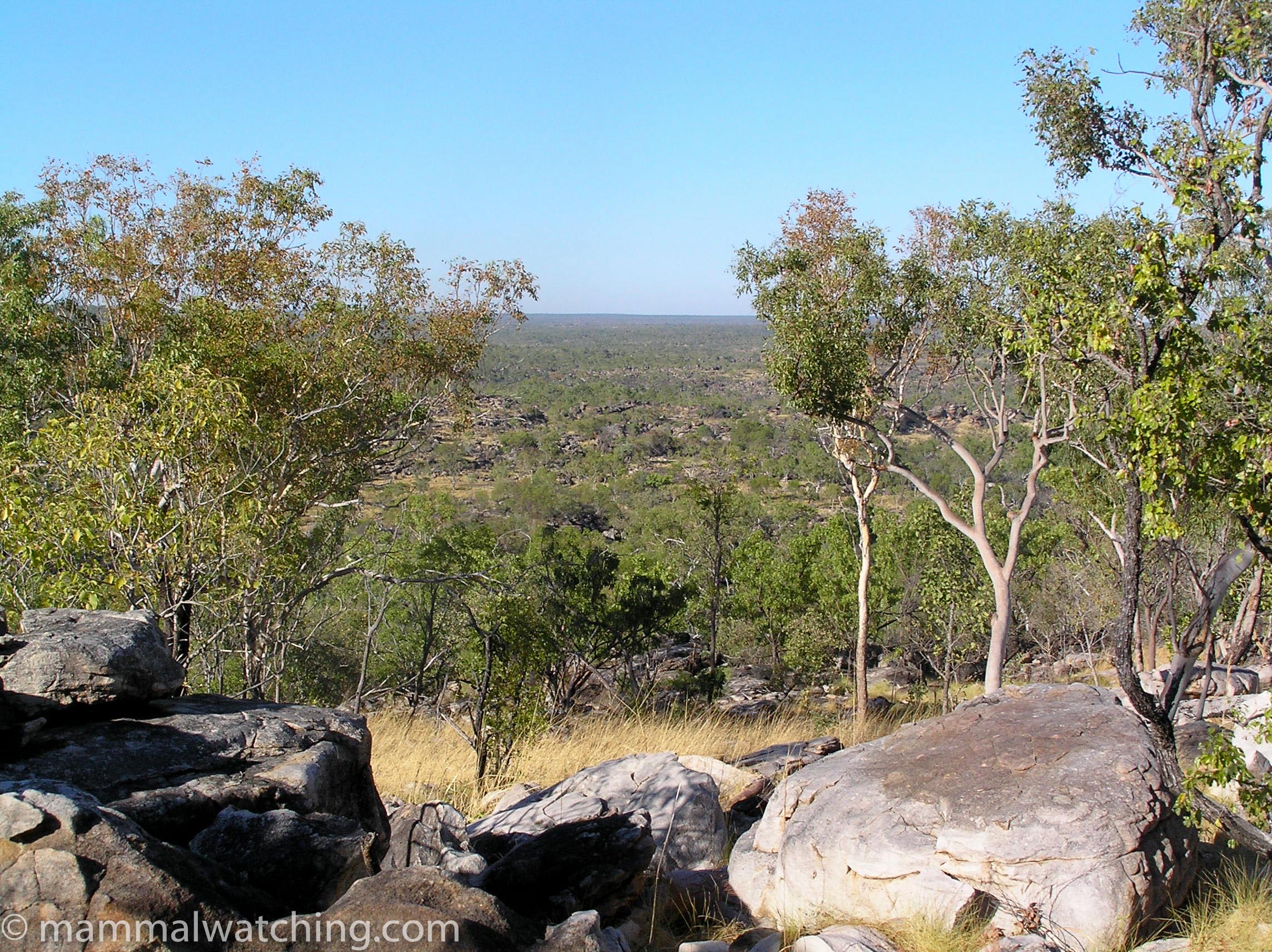
The Mitchell Plateau
In August 2005 I finally made it to the Mitchell Plateau. Mammals were fairly thin on the ground during my 3 hours spotlighting along the track from the campsite to Little Merten’s falls and around that falls area. But its quality not quantity … I got crippling views of a Golden-Backed Tree Rat just 400 metres from camp (about half way between camp and the first falls). It was feeding in a small tree just off the trail and obligingly froze in the spotlight for 10 minutes. A spectacular beast and one, I think, I was pretty lucky to see there. Didn’t see a great deal else that night other than a Monjon near Merten Falls.
The next day I did a recce for good Scaly-tail Possum sites and after advice from Jiri Lochman decided to focus on the stretch of vine thicket/rain forest, a little more than half way along the trail to the falls. I arrived at dusk and walked the few hundred metres of most productive looking habitat every 45 minutes. On my 5th transect, at 10.30 or so, I saw a Scaly-tail right in the middle of the rainforest. Brief but excellent views of it as it shimmied down a tree and wandered off into the rocks. Jiri suggested that these possums are pretty secretive and tend not to emerge until well after dark so this late sighting helps confirm that theory. My second night was much warmer and there was a good deal more mammalian activity. On the walk in, and subsequent spotlighting, I saw 6 Northern Quolls(!) though some might have been the same animal, a probable Kimberley Rock Rat, Black Flying Foxes and what appeared to be a Rock Ringtail – a brief glimpse as it was bolting down a tree near Little Merten’s (it could have been another scaly-tail). There was a Monjon at Little Merten’s the next morning (the consensus is there are no Narbaleks left on the Kimberley mainland). And the scenery isn’t bad either…
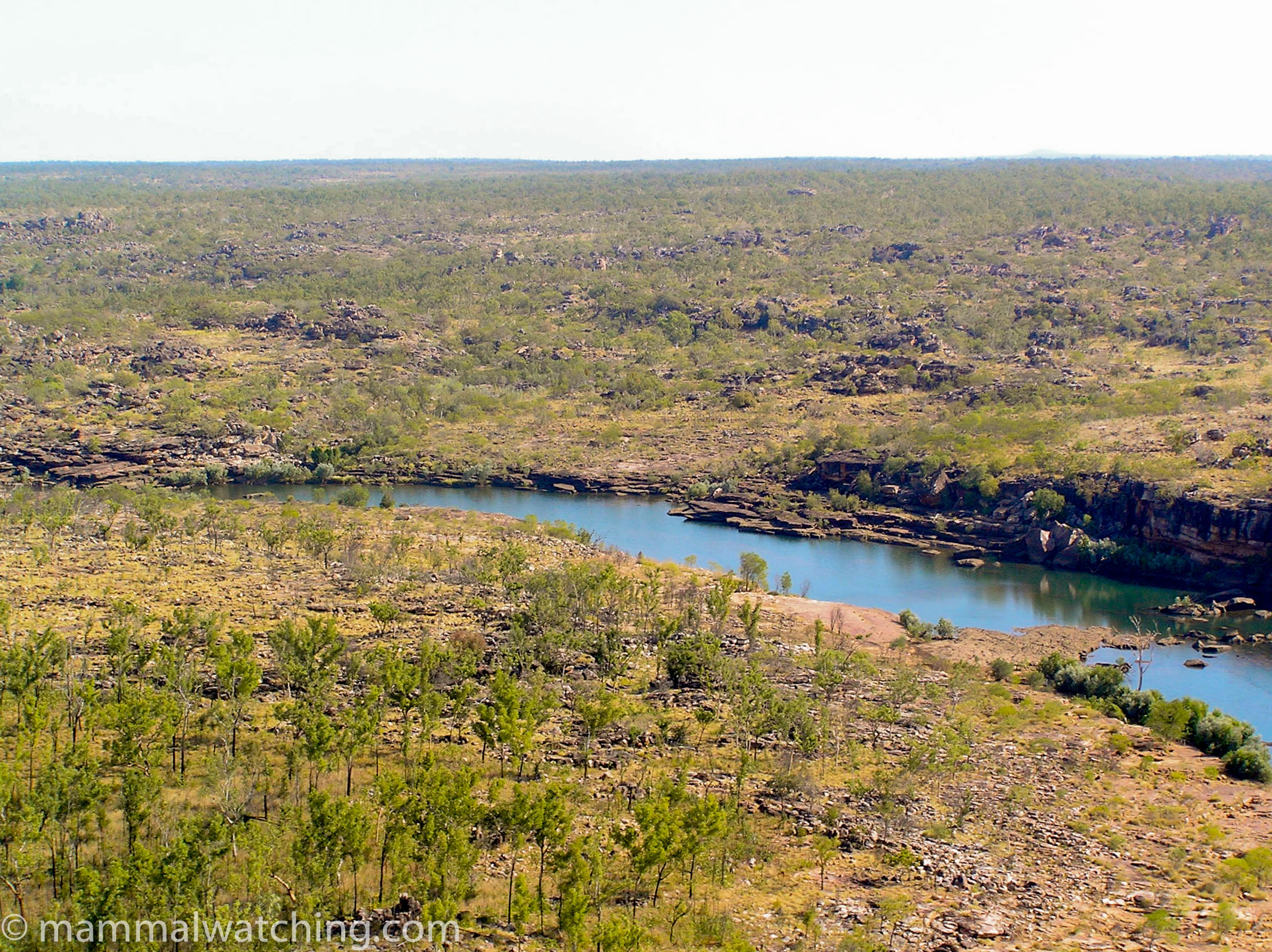
The Mitchell Plateau
After I left the Mitchell Plateau I stopped at the Australian Wildlife Conservancy’s fabulous Mornington Station on the way back to Broome for 2 nights. Steve Murphy – one of the managers – had been good eno ugh to ask me along to the fauna survey they were running. They caught a decent haul of mammals: Western Chestnut Mice, Pale Field Rats, Delicate Mice, Common Rock Rats and Common Planigales and – on my second morning – the Long-tailed Planigale I was hoping for. They’d
also got a Leggadina Lakedownensis (Tropical Short-tailed Mouse) – butthat was before I arrived (bugger).
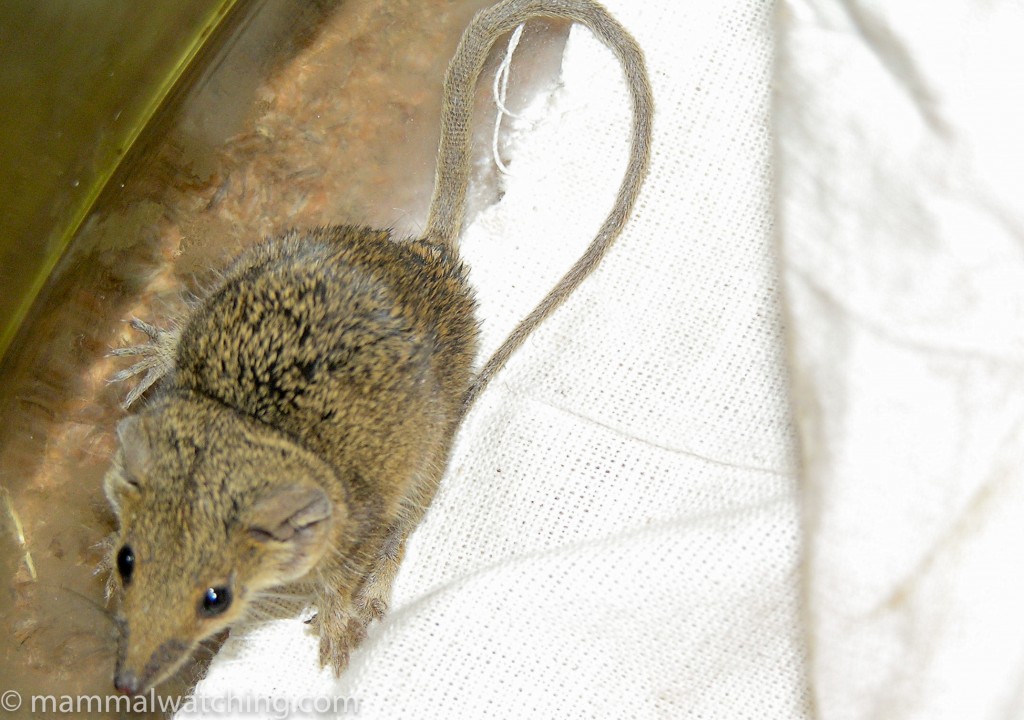
Long-tailed Planigale, Planigale ingrami
In 2014 I went back to the Kimberley for a few days with my kids. The n 2014 I went back to the Kimberley for a few days with my kids. The Snubfin Dolphins were still easy to see at the Broome Bird Observatory, conveniently right opposite One Tree Lookout on the dot of high tide.
Windjana Gorge is quite spectacular and well worth a visit for the scenery alone. I walked around at night and saw a few Black Flying Foxes, and Common Sheathtails Bats down in the gorge, together with a Euro, Agile Wallabies and a Short-eared Rock Wallaby.
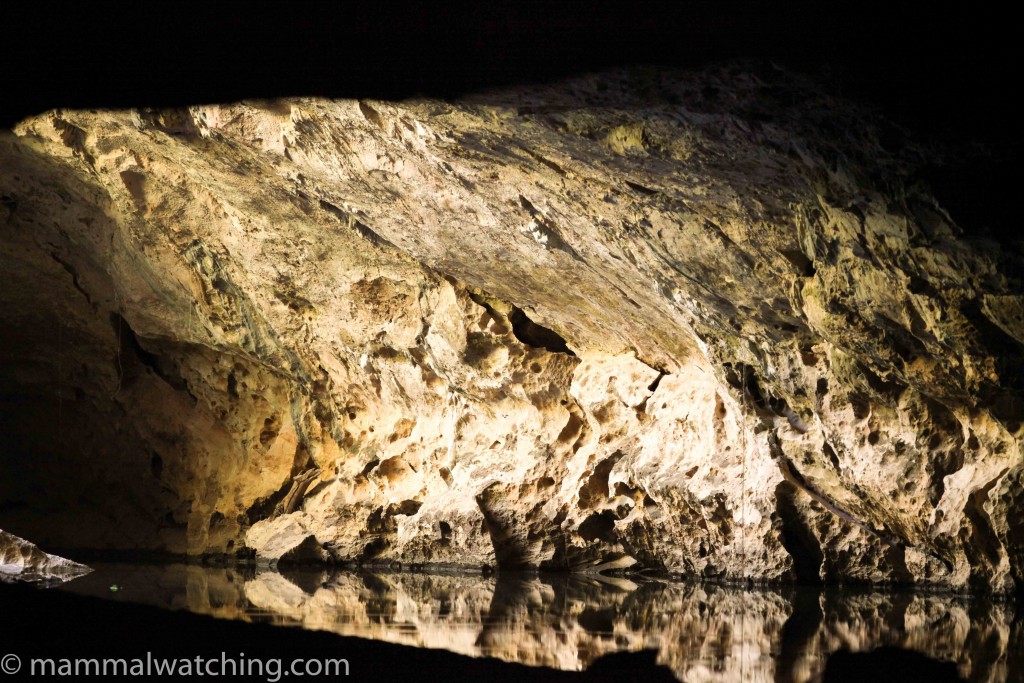
Tunnel Creek
The next day we hiked the kilometer or so along Tunnel Creek: a short but fabulous hike alongside (or inside) the creek which we shared with a few freshwater crocodiles much to my daughters dismay.
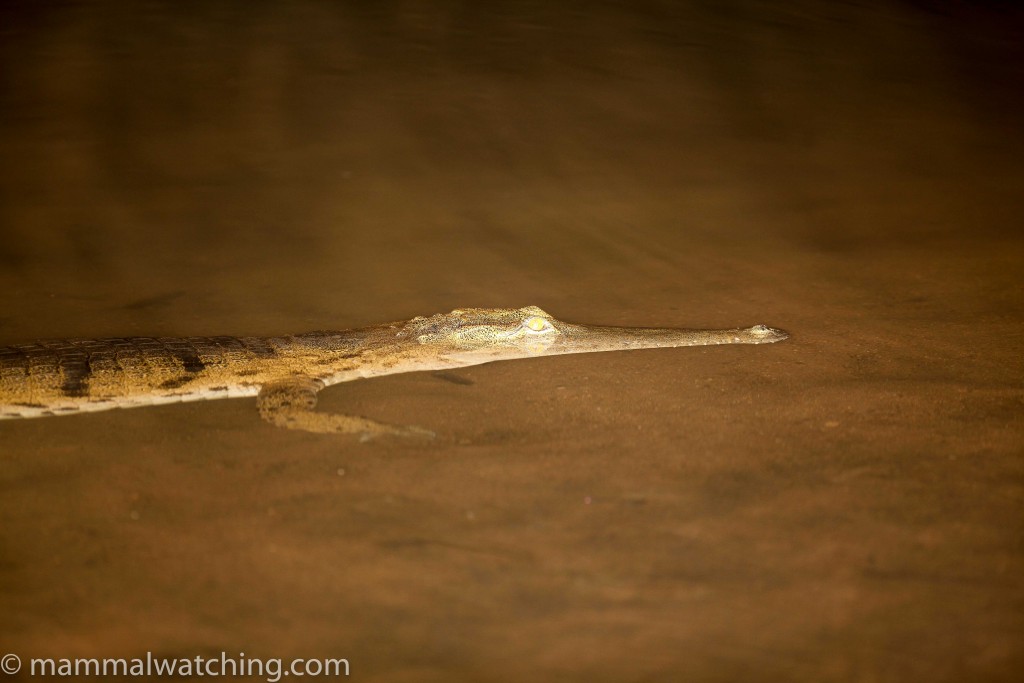
Freshwater Crocodile
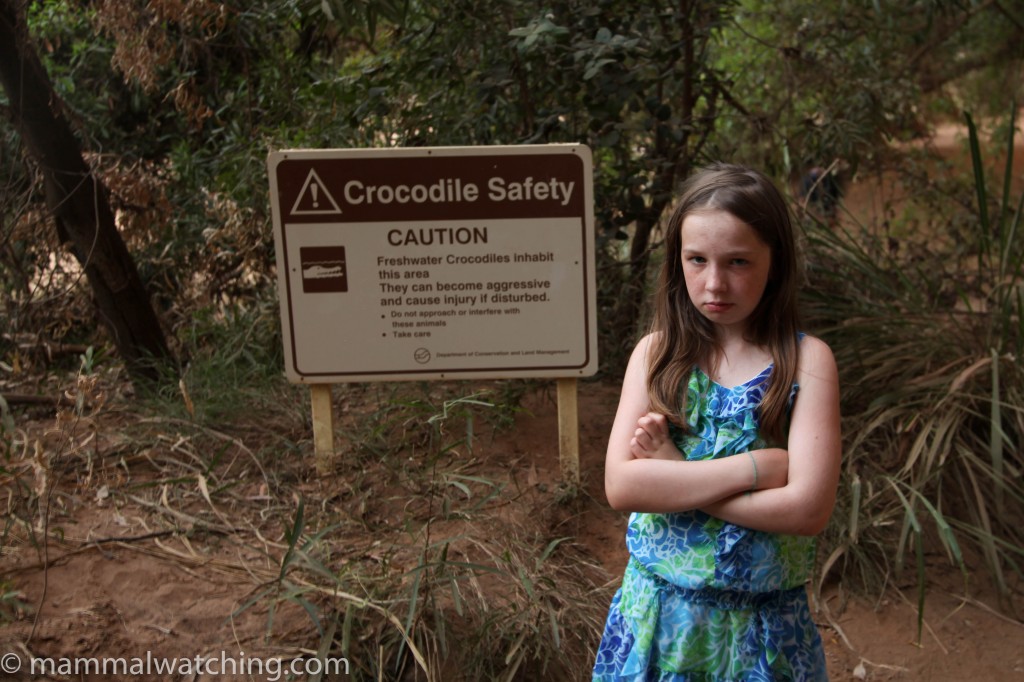
Katy. Not a big fan of Crocodiles.
Common Sheathtails were scattered along the rocks,
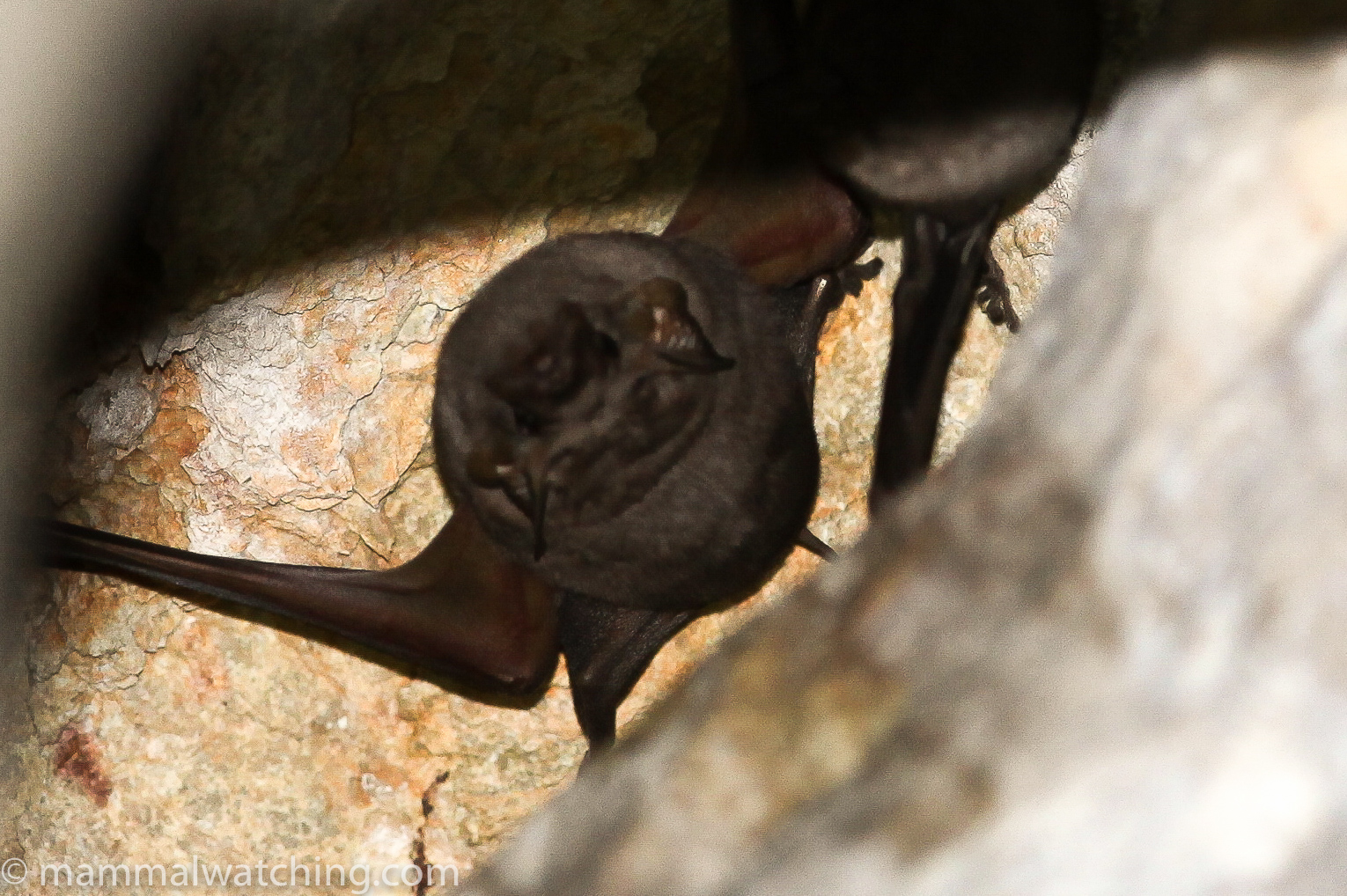
Common Sheath-tailed Bat, Taphozous georgianus
as well as some Northern Bentwings. There were several Vespadelus too… apparently both caurinus and finalysoni but hard to be sure at a distance when photography was tricky.
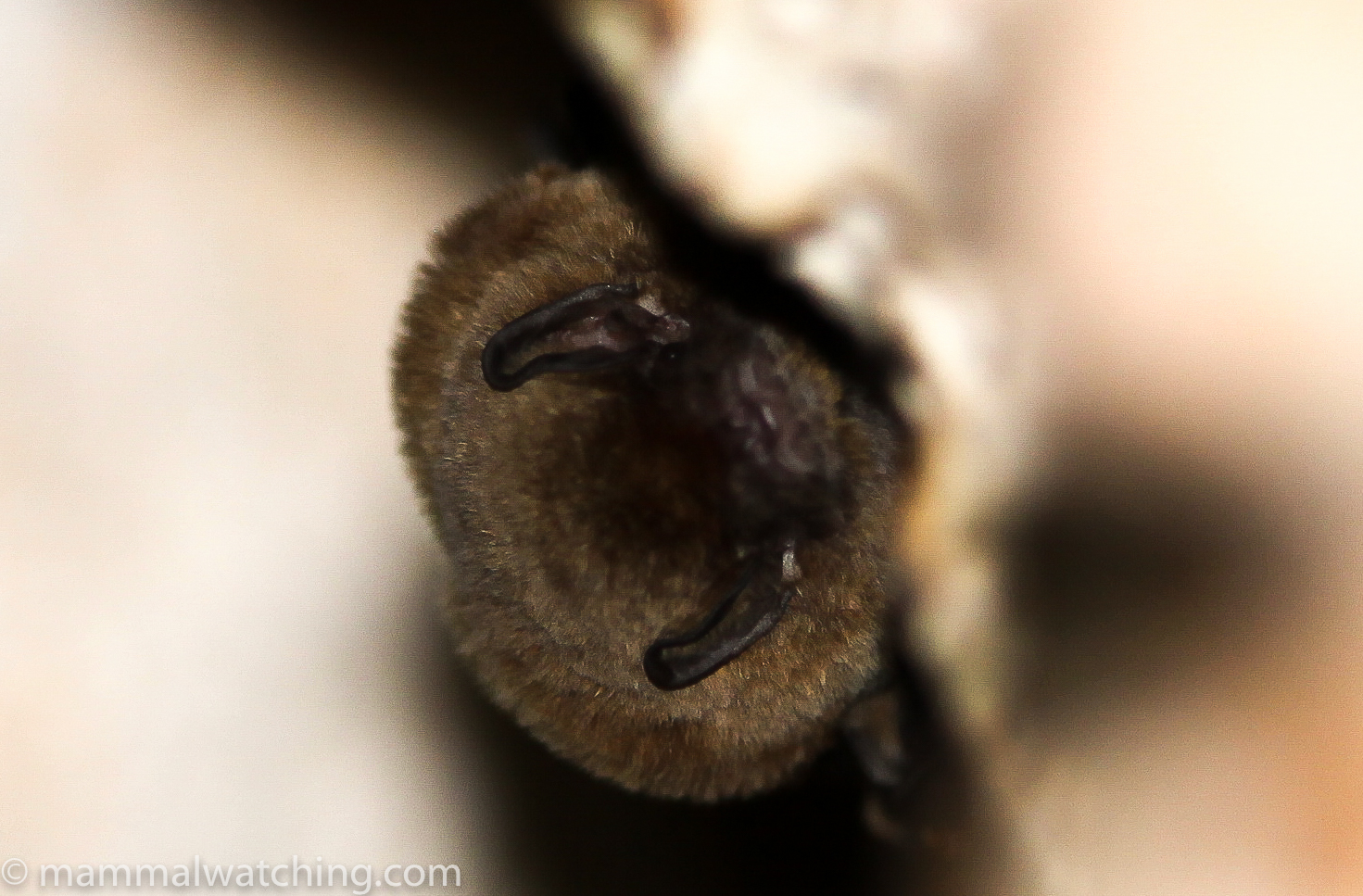
Vespadelus bat species
A few Black Flying Foxes were roosting about half way along the trail near to where the roof collapsed.
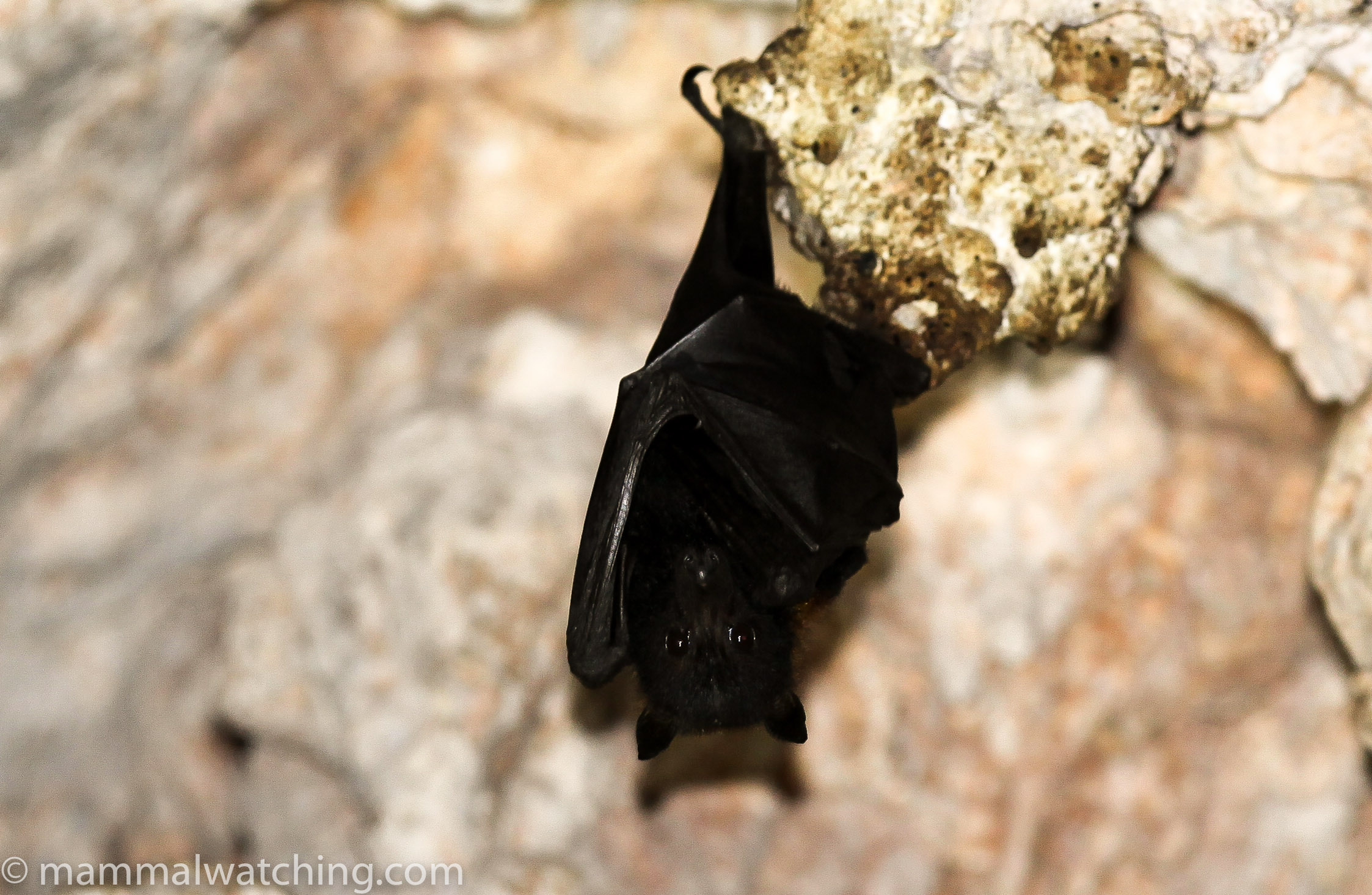
Black Flying Fox, Pteropus alecto
Apparently Ghost Bats are in this section too though I couldn’t see any. An Indigenous guide outside told me they were still there but very high up and I was later told that they might be attracted to show themselves by some judicious squeaking. I could not find, however, any Yellow-lipped Cave Bats which were my main target.
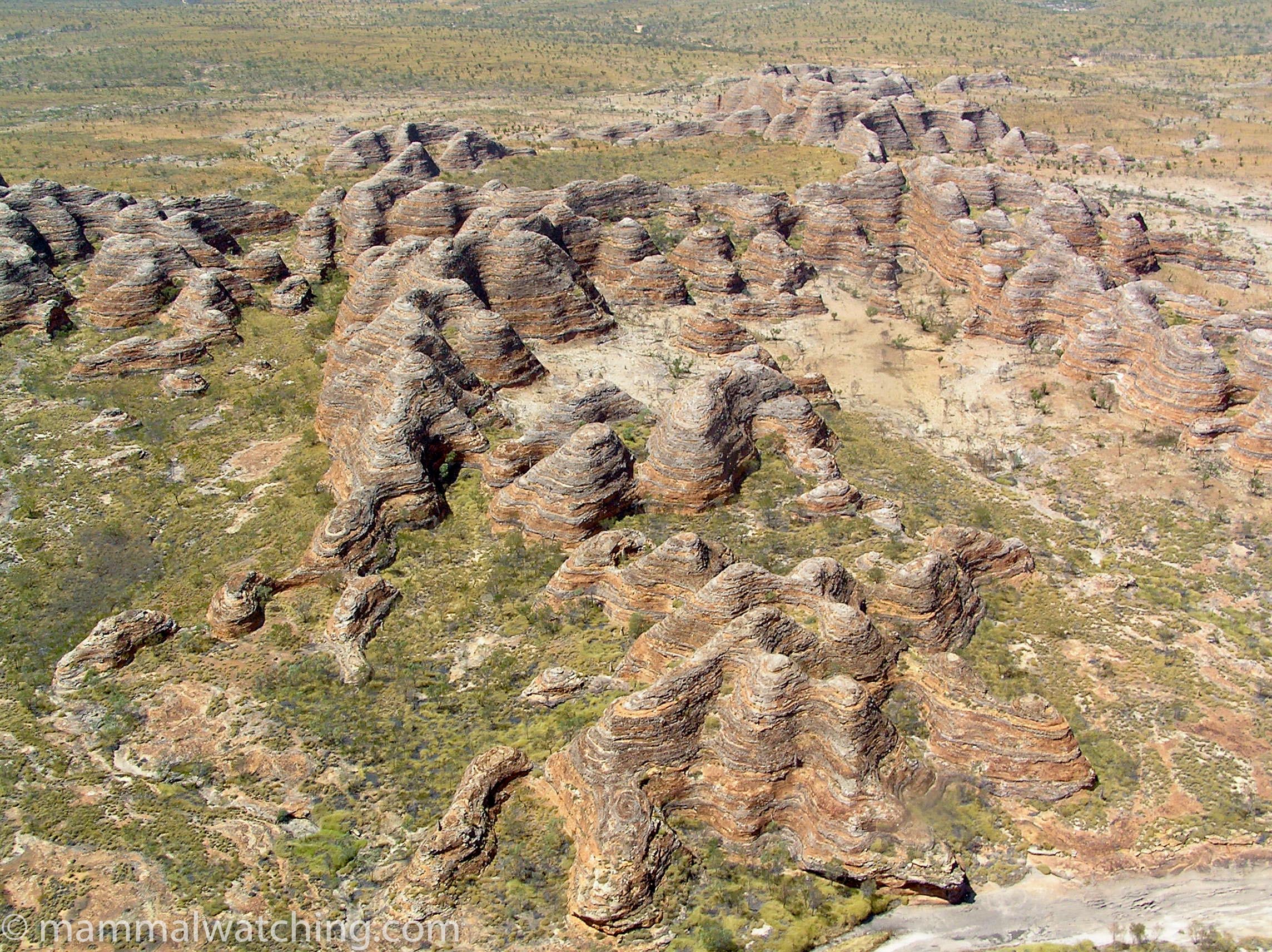
The Bungle Bungles
Further inland Purnululu National Park (AKA the Bungle Bungles) is a good place to see Central Pebble-Mound Mice (Psuedomys johnsoni), though the species here was thought until recently to be a separate species, the Kimberely Mouse, P. laborifex, but has since been demoted).
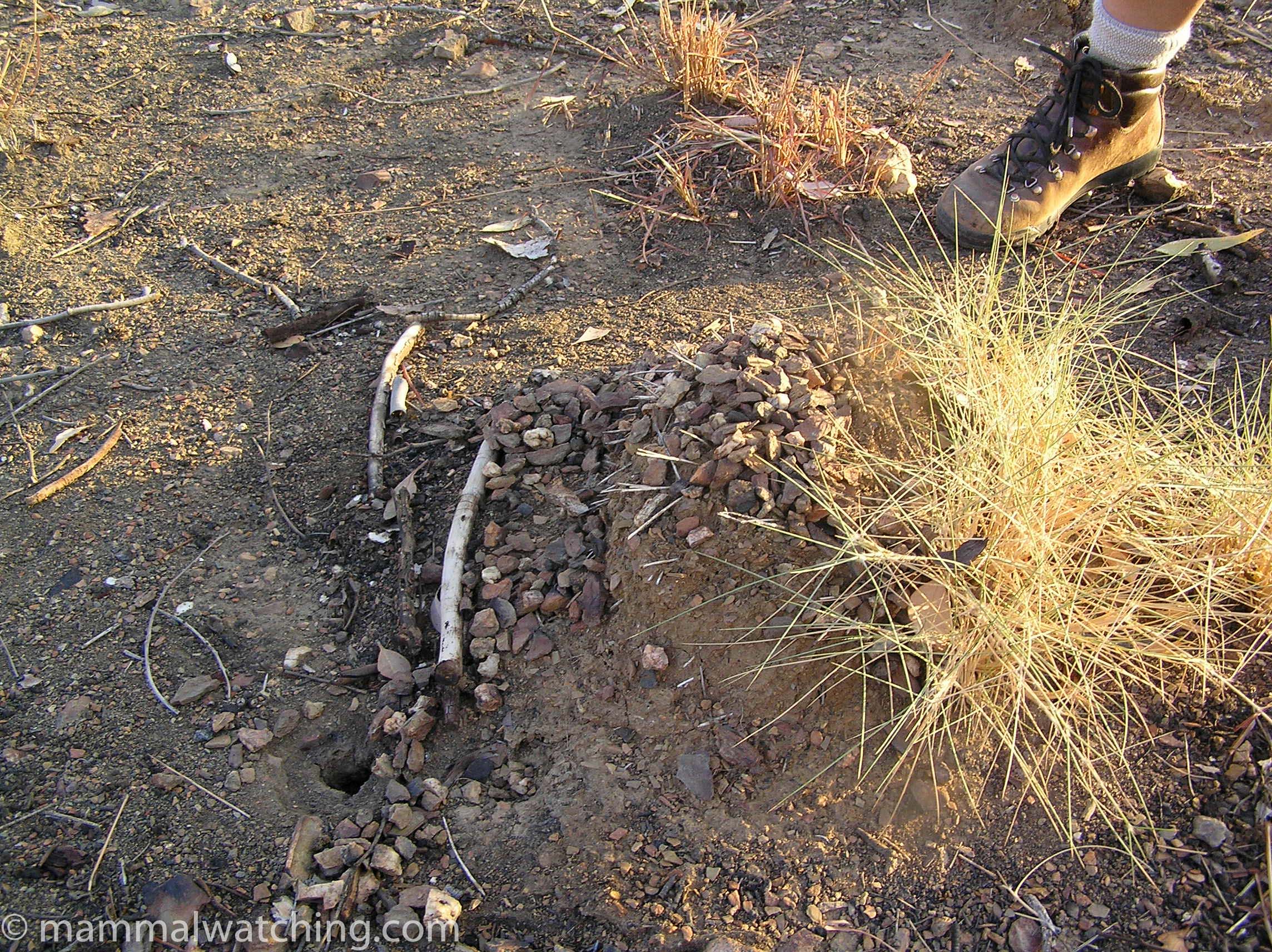
Central Pebblemound Mouse mound
I stopped there in 2005 to see Thalie Patridge. who was doing a phD on the ecology of small mammals and fire. We caught one but she was also radio tracking an individual and found it mating the night I arrived. They mate in the open apparently, not in the privacy of their pebble mound.
Long-haired Rats (Plague Rats) irrupt occasionally in inland Australia but otherwise are quite difficult to find. A small population is permanently established near Kununurra. I saw one in the cane fields near town: head out of town on Ivanhoe Road, take a right onto research station road and then bear left at the Y junction at the end of the road and look in the cane fields around there.
I haven’t been to the Kimberley Coastal Camp. It is expensive but reputedly good for mammals like Northern Quoll and Ningbing Pseudantechinus.
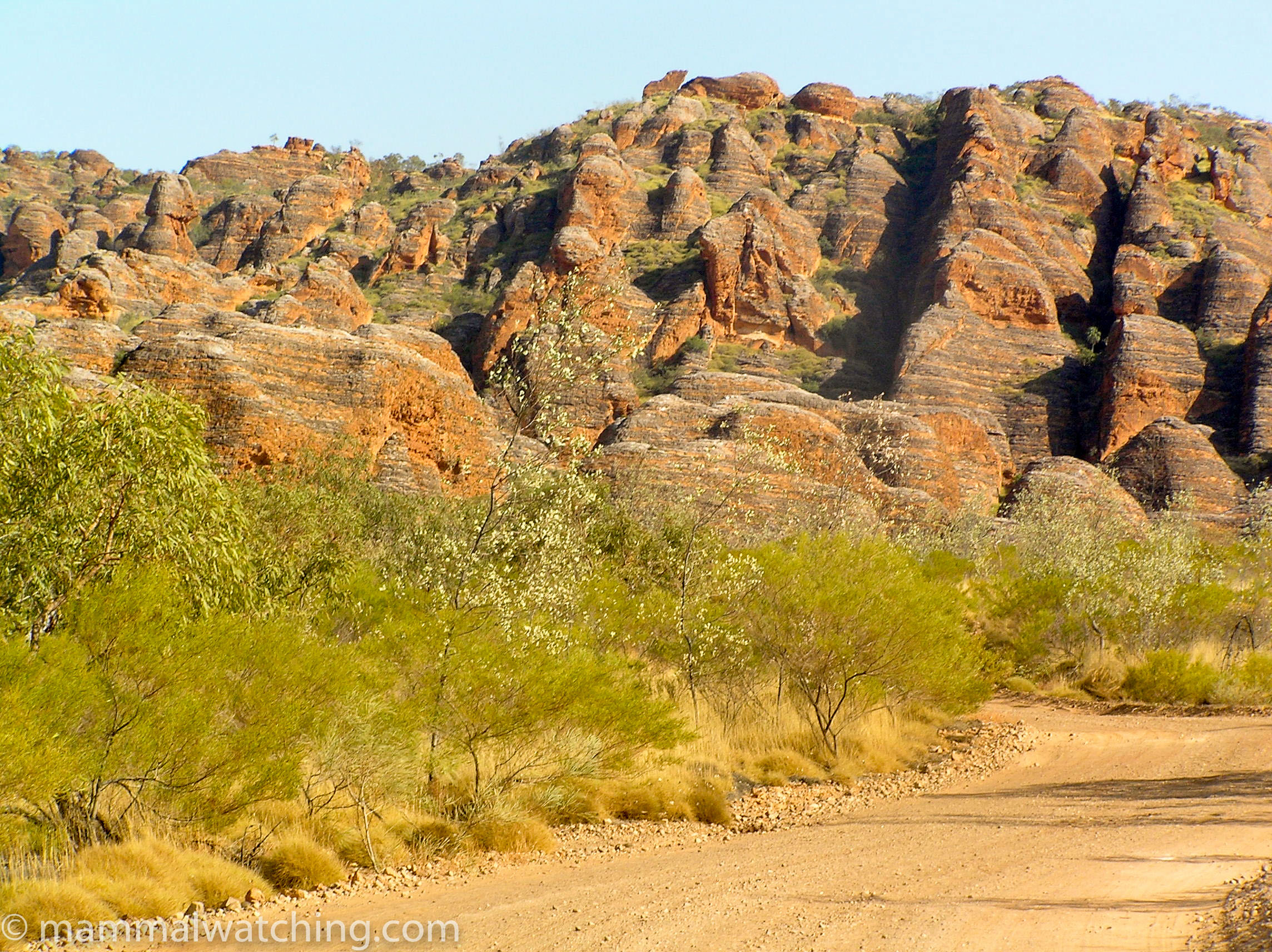
The Bungle Bungles
Community Reports
Perth to Dryandra, 2024: John Wright, 2 weeks & 12 species including Numbat, Western Quoll and Australian Sealion.
South-west WA, 2023: Warren Gilson, 2 weeks & 15 species including pygmy Blue Whale, Honey Possum, Western Ringtail and Numbat.
Bremmer Canyon, 2022: Steve Reynolds’s report of 10 days at sea (day trips) with 9 cetaceans including Orcas plus Gray’s and True’s Beaked Whales.
NT, WA, SA, NSW & Vic, 2019: Isaac Clarey’s mega report, 5 months & 89 species including Scaly-tailed Possum (WA), Rock Ringtail Possum (NT), Monjon (WA), Ghost Bat (NT & WA) and Orange Leaf-nosed Bat (NT), Fawn Antechinus (NT), Southern Greater Gliders (NSW) and Yellow-bellied Gliders (NSW) and much more.
Perth to Exmouth Cruise, 2020 (Part 1 and Part 2 including Bernier Island): Tim Bawden, 1 week and some great species including Banded Hare Wallaby, Rufous Hare Wallaby and Western Barred Bandicoot.
Australia, 2018: Valentin Moser’s report of mammals seen over the course of 75 days on several trips. He saw over 100 mammals including Mahogany Glider, both Feathertail Gliders, Proserpine Rock Wallaby, Numbat and Honey Possum.
A Mammalwatching Year, 2018: Jannico Kelk’s account of mammals in WA, Qld and Tas, including Honey Possum, Brush & Red-tailed Phascogales and some nice bats. Wonderful photos.
North West Australia, 2018: Jimmy Lamb, 1 month & 24 mammals including Northern Quolls, Monjons, Golden-backed Tree Rats, Rock Ringtail and Scaly-tailed Possums.
S.W. Western Australia, 2017: Paul Carter, 2.5 weeks & 23 species including Numbat, Red-tailed and Brush-tailed Phascogales and Honey Possums.
W.A, VIC and NSW, 2017: Dominique Brugiere, 1 month with species including Western Pygmy Possum, Numbat, Quokka, Brush-tailed Rock Wallaby and Common Dunnart.
S.W. Western Australia, 2016: Rohan Clark, four weeks or so & 37 species including Red and Brush-tailed Phascogales, Numbat, Western Pygmy and Honey Possums, Western Freetailed Bat and Western Falsistrelle.
Australia, 2016: Domique Brugiere, 2 months and a lot of mammals including Black Wallaroos, Rothschild’s, Cape York, Godman’s, Sharman’s and Proserpine Rock Wallabies plus Bridled Nailtail Wallabies
Across the Nullabor, 2016: Tim Bawden, 8 days & 24 species including Southern Ningaui, Numbat, Western Pygmy Possum and Yellow-footed Rock Wallaby.
WA, Qld & Tas, 2015: Steve Morgan, 4 weeks & 45 species including Tiger Quoll, Honey Possum and Eastern Long-eared Bat.
Australia and New Zealand, 2014/15: Pieter de Groot Boersma, 10 months & 117 species including Brush-tailed Rabbit Rat, Feathertail Glider, Leadbeater’s Possum, Northern Bettong, Prehensile Tailed Rat and Cape York Rock Wallaby. <<Note: the Nailtail Wallaby was in fact Northern, not Bridled. And expert opinion think the mysterious macropod discussed at the end of the report was a Short-eared Rock Wallaby not a Narbalek.>> Click here to search for Pieter’s various videos from Australia.
Australia & Hong Kong 2015: Dominique Brugiere, 6 weeks & some nice species including Southern Hairy-nosed Wombat, Yellow-footed Rock Wallaby, Woylie, Koala, Eastern Pygmy Possum, Tiger & Western Quolls and Honey Possum.
Australia & Singapore, 2013: Andrew and Ben Balmford, 2 months & 98 species! Including, in WA, Western Quoll, Ningbing Pseudantechinus, Ghost Bat, Kimberley Cave Bat and Kimberley Rock Rat.
Northern Australia, 2012: Dion Hobcraft, 18 days, 7500km & an impressive 43 species including some difficult ones like Kultarr, Scaly-tailed Possum, Northern Leafnosed Bat and Northern Dibbler.
Australia and New Zealand, 2011: Matt and Maureen Steer, 12 weeks & 50 species including a Chudditch (Western Quoll) and Brush-tailed Phascogale in WA.
Western Australia, Alice Springs & Tasmania (2008): Don Roberson, 2 weeks and 18 mammals.
Australia, 2004: Richard Webb, 1 month & an impressive 50 mammals.
Around the World (Australia), 2004: Richard Webb, 6 weeks.
Also See
Listen to Tony Friend talk about the rediscovery of Gilbert’s Potoroo on the mammalwatching podcast, May 2022
RFI Mega Trip to Australia, September 2024
Finding Honey Possums and mainland Quokkas: two videos, June 2021
Western Australia (2016): Jimmy Lamb’s excellent notes on where to see a wide variety of Western Australia’s larger mammals.
Interesting post on how to find Bilbies, November 2015
Killer Whales and other cetaceans off West Australia (Bremer Bay), November 2014
Resources
Chris and Mathilde Stuart’s website has mammal checklists for several areas in Western Australia including Cape Arid and Cape Le Grand National Parks.


Leave a Reply
You must be logged in to post a comment.